Prices have been brought up to date, and are for stamps in 'average' condition. The currency is now selectable, the default is British Currency (£). I have revised Hiscocks' original listing, though leaving references to the original designations. The new designations have 'RH' numbers (Revised Hiscocks) to avoid confusion. Setup |
Steve Hiscocks wrote:
The company was set up in 1859 to provide a cheap service for the London area. In this it was highly successful and it took the majority of the London
local business with a basic rate of 6d for a simple message. In 1868 the company reorganised under the name of the 'London and Provincial District
Telegraph Co. Ltd.' in anticipation of extending its services but it was bought out by the Postmaster-General before it could do so and its stamps
did not reflect this change. Both of the series of stamps issued were designed and printed by Truscott and Sons of London and are reported to
have been issued in booklets of 10 panes of six stamps.
My note:
Raymond Lister (1961) gives 4 January 1859 as the date that the company was founded, and that provincial messages were routed through the
British and Irish Telegraph Co., and that messages were also accepted for the Submarine Telegraph Co. Lister also says that the Head Office
was originally at 58 Threadneedle Street, where the British and Irish Telegraph Co. and Submarine Telegraph Co. also had Head Offices.
Analysis of flaws on the stamps indicate that the 6d of the first series and both stamps of the last were printed in sheets of 40, being 5 x 8.
The other two values are uncertain. It is possible that sheets were divided up to make booklet panes, but panes of six does not work well from those sheets.
I have yet to see any evidence for booklets. Having said that, booklets would make a lot of sense. Panes of eight or blocks of four perhaps.
It should be noted that in the USA, though the Western Union issued franks in booklets from 1872 onwards, the 1871 issue was "in blocks of four loose in a containing cover".
Though the stamps did not get a name-change in 1868 when the Company changed its name, their stationery became headed "The London & Provincial Telegraph Company (Limited)",
The word "District" does not appear in it. L & H say that the name change was in 1867, which agrees with Raymond Lister.
All the stamps were designed and manufactured for the company by Truscott and Sons, of Suffolk Lane, London.
| Shortcuts to different sections | |||||||
| 1860 | Provisional | 1865 | Calculator | Statistics | Anomaly | Stationery | Evidence |
There is some uncertainty about when these stamps were first produced.
Philbrick & Westoby (1881) state:
"The first series of stamps was issued in 1862, and at that time Alfred Ogan was the secretary to the Company ..."
Raymond Lister (1961), S. E. R. Hiscocks (1982) and Langmead & Huggins (2003) echo 1862 as the date of production.
However Raymond Lister says Charles Curtoys became Secretary after 1850 and was appointed Manager in 1861.
Company forms printed 9/1/1860 list rates that would require 4d and 6d stamps. A later form used 18 September 1861 has rates requiring 3d and 6d stamps with no use for a 4d stamp.
To me that suggests that the 4d and 6d were issued in 1860 or earlier, followed by the 3d and discontinuance of the obsolete 4d in 1861 or 1862.
Anyone have any different forms of this period ?
The signature of the secretary on the first stamps, is indeed A. Ogan, but according to Steven Roberts of Distant Writing,
"... from 1861 until 1870, the position of secretary and manager was occupied by Charles Henry Curtoys, ..."
If this was the case then Alfred Ogan was no longer secretary by 1862, and for the stamps to bear his name, they had to date no later than 1861.
Another possibility is that he was secretary when the stamps were designed, but no longer when the stamps were first used.
Alfred Ogan (born 6 June 1824 in Hackney), by profession a public accountant, also wrote an influential book on the prevention of railway accidents in 1855.
Subsequently he moved his entire family to Uruguay/Argentina in 1875, where they helped the spread of the coast to coast railway system.
Hilary Waller, one of Alfred Ogan's great-great-grandchildren, is trying to find out more about his rôle as secretary of the LDTC, so if anyone can help, please get in touch.
The first set had the values 3d, 4d and 6d, Perf.12½.
According to Langmead & Huggins, initially the rates were 4d for up to 10 words, 6d for 11 to 20 words, 2d for each additional 10 words.
This would have meant high usage of 4d and 6d but not many 3d.
Langmead & Huggins go on to say that "By October 1862 the rate had changed to 15 words 6d, 20 words or message and reply (15 words each) 9d, additional 10 words 3d."
This would mean high use of 3d and 6d but not much use for the 4d
Raymond Lister (1961) says:
"At first the minimum rate was 4d for 10 words. In 1861 it was found necessary to increase this to 6d for 15 words. It was again increased in 1866 to 1/- for 15 words."
I am not convinced all values were issued at the same time. I suspect that initially the 4d and 6d stamps were used and when the rates decreased, the 4d was replaced by 3d.
The 4d is scarcer than the other two.
Steven Roberts also gives the following useful information:
"... on October 18, 1861, the District launched its major discount scheme for trade customers, offering 100 pre-paid messages for twenty shillings ..." [until 1866].
It is difficult to imagine how this could easily be accounted for without the use of stamps!
It also explains why the 6d stamp is relatively common."
Steven Roberts also says on How The Companies Worked (about two thirds of the way down)
"The London District Telegraph Company sold its 6d message stamps bound into small books with ten pages of six stamps in 1861."
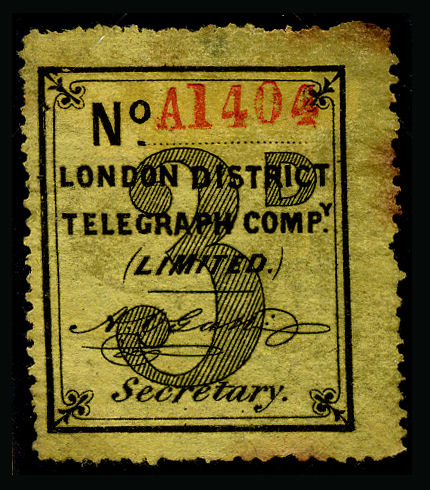 |
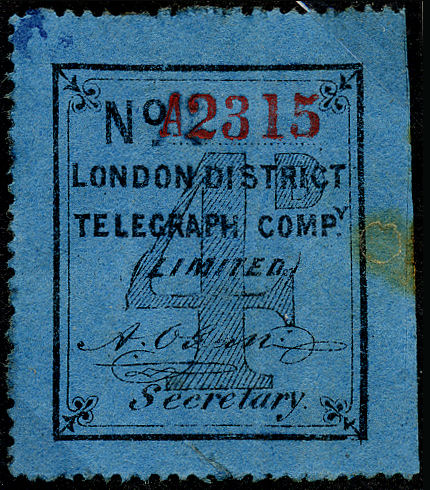 |
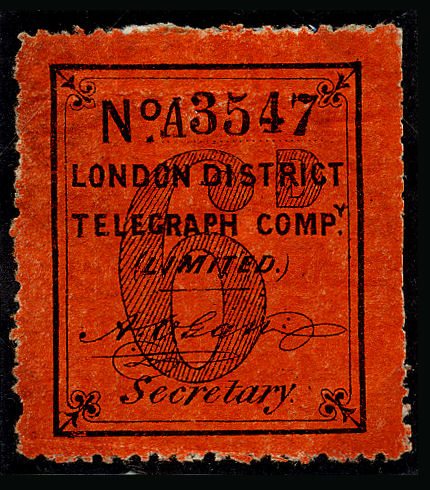 |
| RH1 | RH2 | RH3 |
| Courtesy of the late Mike Holt - The 4d has a straight edge on the right which could indicate the edge of a pane. It is also the only one with a broken line under 'LIMITED'. The 6d is now owned by Mark Talbot. |
||
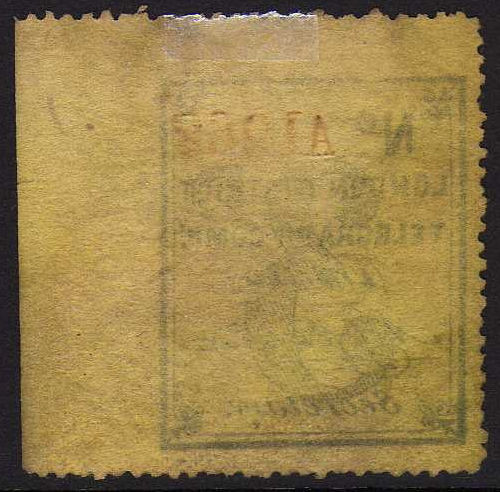 |
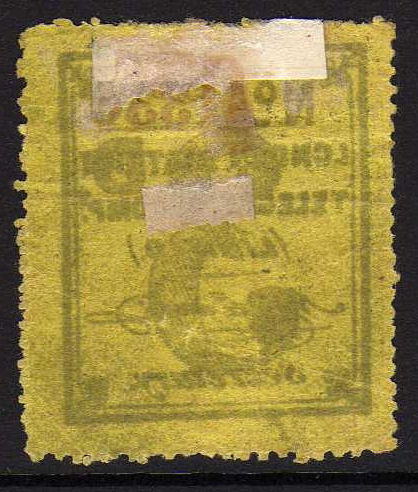 |
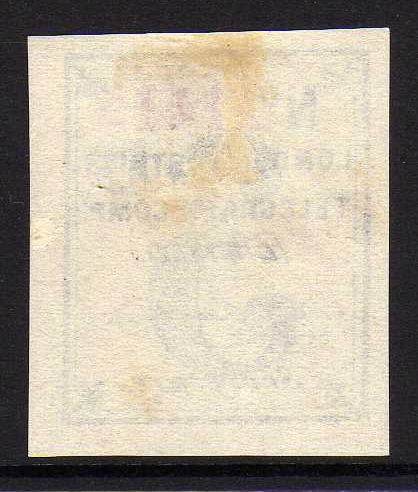 |
| 3d control A1262 which was clearly on the right side of the sheet. | 3d control A1336 | 3d control A1415 sold as a proof (the front is yellow). |
| Reverse of stamps above, courtesy of Andrew Higson. | ||
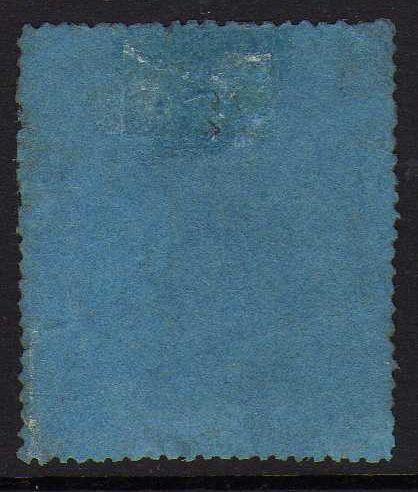 |
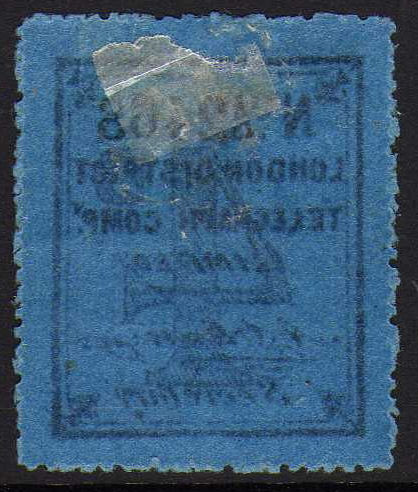 |
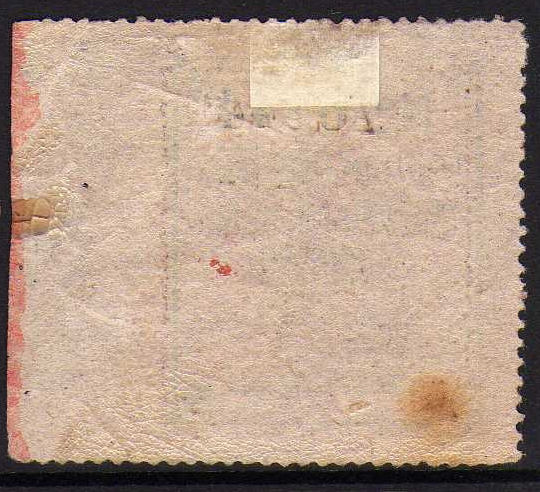 |
| 4d control A2466 on dull paper. | 4d control A2468 on translucent bright paper. | 6d control A6244 showing surface colouring seeped around the edge of the sheet. |
| Scans of reverse of stamp, courtesy of Andrew Higson. The two 4d stamps (scanned together) are clearly from different sheets, though with close control numbers. | ||
I had originally assumed that the difference between the two 4d stamps above was due to differences of paper thickness.
Now I am not so sure. My 4d examples, A2358, A2375 and A2468, the highest number I have a scan of, all measure about 0.11mm in thickness.
I do not know the thickness of A2466. For the record, my 3d stamps, A1262, A1364 and A1443 all measure about 0.08mm thickness.
| RH # | Hisc. | Description | Rarity | Mint | Used | Qty |
|---|---|---|---|---|---|---|
| RH1 | H1 | 3d black on pale yellow paper (red control) | R3 | 120.00 | 120.00 | 26 |
| RH1a | H1a | 3d black on dull buff (red control) | R3 | 120.00 | 120.00 | |
| RH2 | H2 | 4d black on blue paper (red control) | *R4 | 240.00 | 240.00 | 12 |
| RH3 | H3 | 6d black on vermilion-coated paper (black control) | *R3 | 60.00 | 60.00 | 59 |
'Qty' is the number of scans I have. Their various origins do not allow distinction between yellow and dull buff papers, I think this is intended
to distinguish between the two types of paper shown above, which also applies to the 4d value.
* The L&H R3 implies 10-50 copies probably existing and R4 implies less than 10. The 6d should be regarded as R2 (50-100), with the 4d being R3.
Hiscocks says "Both of the series of stamps issued were designed and printed by Truscott and Sons of London
and are reported to have been issued in booklets of 10 panes of six stamps." (From 1861, see Steven Roberts above).
Langmead & Huggins agree they were lithographed by Truscott and Sons but say nothing about sheet format.
After much effort and a lot of scans supplied by others (thanks everyone) I have come to the conclusion that:
The 6d was printed in sheets of 40, 5 rows of 8 stamps per row.
The 4d was printed in sheets of 42, as 6 rows of 7 stamps per row.
The 3d has given me a lot of trouble. I think it was printed in sheets of 84 in 2 panes, each of (6 rows x 7 stamps).
A rather strange number, but works well for breaking up into booklet panes with a few left over for counter use.
It also produces a sheet face value of one guinea (21/-).
It seems likely that the 3d and 4d sheets at least, were broken up and sold in booklets.
It should be noted that the first franks of the Western Union in the USA (1871) were actually sheet stamps in blocks of 4 in a containing cover.
It was not until the following year that they were issued as panes bound into booklets, a practice that was continued subsequently.
So far, I have 115 scans of the following:
| 3d Yellow | 4d Blue | 6d Vermilion |
|---|---|---|
| A661, A1112, A1144, A1221, A1262, A1267, A1310, A1320, A1324, A1336, A1338, A1357, A1364, A1379, A1386, A1395(L&H), A1401, A1404, A1415*, A1423, A1424, A1429, A1443, A1448, A1463, A1469, A1480, A2121, A2382, A4853, A4999. |
A2315, A2333, A2340, A2342, A2354, A2356, A2358, A2364, A2367, A2375, A2378, A2383, A2392, A2464, A2465, A2466, A2468. |
A1967, A1968, A1979, A1984, A1991, A1993, A2006, A2013, A2017, A2020, A2023, A2032, A2041, A2042, A2057, A2059, A2064, A2065, A2092, A2099, A2102, A2108, A2111, A2114, A2115, A2122, A2135, A2146, A2166, A2174, A2181, A2194, A2200, A2210, A2211, A2217, A2226, A2229(L&H), A2338, A2341, A2345, A2371, A2387, A2414, A2425, A2435, A3543, A3544, A3546, A3547, A3548, A4110, A4418, A4419, A4722, A5304, A5312, A5317, A6244, A6248, A6261, A6269, A6272, A6274, A7404, A7409, A8852, A9855. |
| 31 | 17 | 68 |
* this is apparently a proof. Evidence suggests that these were made some time after production started to test surface coloured rather than coloured paper production.
| Range | 3d Yellow | 4d Blue | 6d Vermilion |
|---|---|---|---|
| Lowest | A661 | A2315 | A1967 |
| Highest | A4999 | A2468 | A9855 |
| Difference | 4338 | 153 | 7888 |
The 6d almost certainly got to the maximum 4-digit number. What happened then?
Logically, they would have simply started again with control numbers starting with 'B', but I have not seen or heard of any.
Perhaps they moved on to the next series, using hand-written numbers until a number-stamp was available.
Later the design was changed, initially with manuscript controls. Surface coloured.
These bear the signature of Charles Curtoys as Secretary & Manager (he was formerly working for the Electric & International Telegraph Co.)
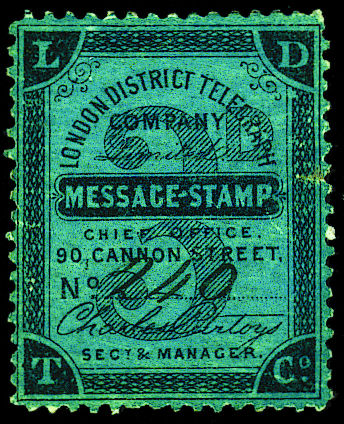 |
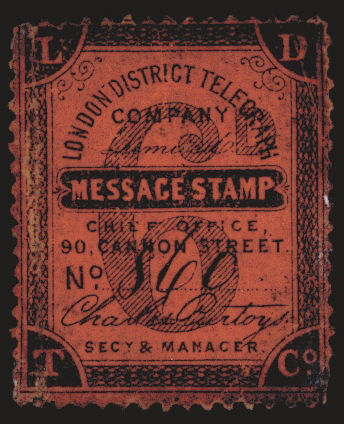 |
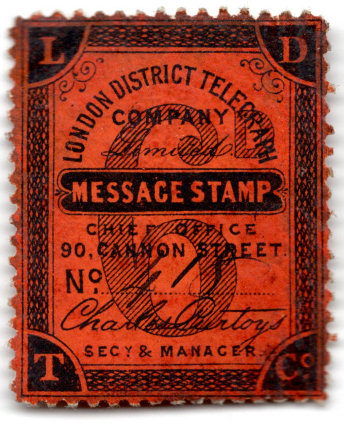 |
| 3d on blue-green surface-coloured paper, RH4 Number 240 (row 5, stamp 8) |
6d on vermilion paper, RH5 Number 860 (row 5, stamp 4) |
6d on vermilion paper, RH5 Number 418 (row 3, stamp 2) |
| From Langmead & Huggins, Colour Plate 1, Courtesy of the Great Britain Philatelic Society. | Courtesy of Mark Gibson. | |
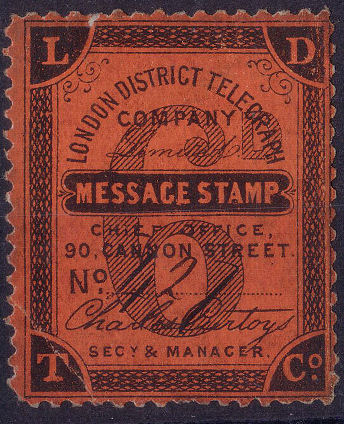 |
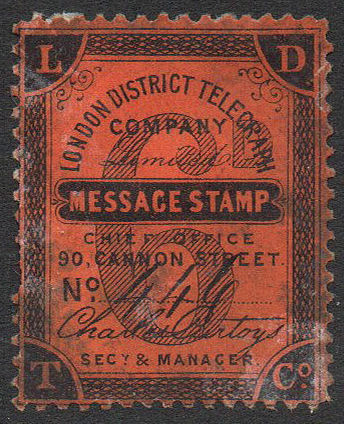 |
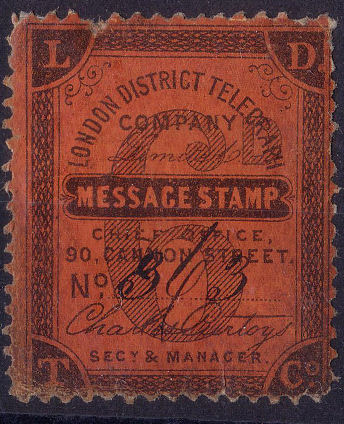 |
| 6d RH5 Number 427 (row 2, stamp 4) |
6d RH5 Number 446 (row 1, stamp 6) |
6d RH5 Number 363 changed to 863 (row 3, stamp 5) |
| Courtesy of Steve Lawrie. | ||
I have now one scan of the 3d, control 240, as illustrated in the Langmead and Huggins book, and five scans of the 6d
The 3d matches the last stamp on the 6th. sheet of 40 stamps. These were numbered vertically like the first series, but starting at the top-left of the sheet.
240 is the correct control number for the last stamp on the sixth sheet whichever way they are numbered starting at the top-left, but the same is not true of the others.
6d Control 860 is illustrated by Langmead and Huggins and correctly matches row 5, stamp 4.
6d control 863 correctly matches row 3 stamp 5 of the later type stamps.
6d control 427 is a Group 2 stamp matching row 2 stamp 4 of the later type stamps, though 417 would be expected to be there.
I have no explanation for that.
See the following series for a full description of the stamp characteristics.
More scans needed.
| RH # | Hisc. | Description | Rarity | Mint | Used |
|---|---|---|---|---|---|
| RH4 | H4 | 3d black on greenish blue (pen control) | R5 | - | - |
| RH5 | H5 | 6d black on vermilion (pen control) | *R5 | - | - |
*Langmead and Huggins give Rarity 5 for this (Official collections only), This should be Rarity 4 (probably less than 10 copies exist).
Despite L&H saying these are Perf. 12½, I make them I make them the same as the last ones.
The controls were printed in either large or small type. The colours were changed to those below.
These are in sheets of 40 (5 rows of 8 stamps) numbered horizontally from the top-left of the sheet.
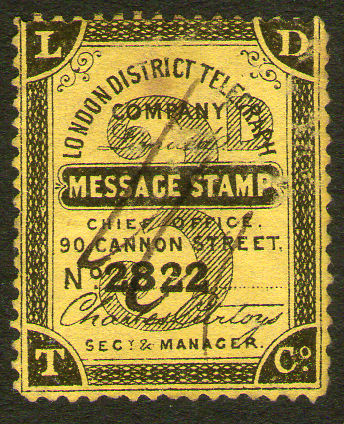 |
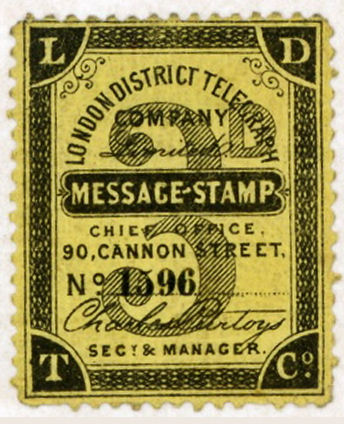 |
| RH6 | RH6a courtesy of Mark Gibson. |
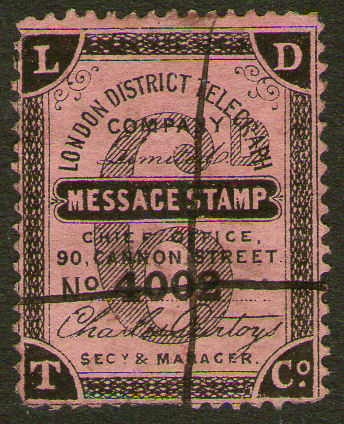 |
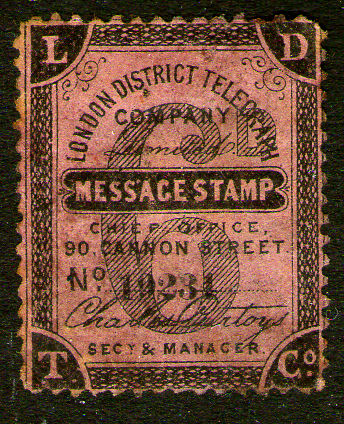 |
| RH7 | RH7a |
In each pair, the first is the commonest type with large controls, followed by the small control.
Before this there were some with hand-written controls, but these were supposedly only known in official collections.
It's not always easy to see the difference between the large and small control numbers, but the large controls seem to be all 3 or 4 rather 'blocky' digits and are
usually pen-cancelled, whereas the small controls seem to be up to 5 stylized digits and are more often unused.
For the large control numbers, I have seen on the 3d, 206 to 4911. on the 6d, 424 to 8600.
For the small control numbers, I have seen on the 3d, 685 to 23499. on the 6d, 1037 to 39857.
Multiples are surprisingly scarce, making plating difficult.
Printed by Truscott and Sons of London in sheets of 40 (5 rows of 8 stamps).
| RH # | Hisc. | Description | Rarity | Mint | Used |
|---|---|---|---|---|---|
| RH6 | H6a | 3d black on yellow (small control) | R1 | 40.00 | 40.00 |
| RH6a | H6 | 3d black on yellow (large control) | Scarce | 20.00 | 6.00 |
| RH7 | H7a | 6d black on rose (small control) | R1 | 30.00 | 30.00 |
| RH7a | H7 | 6d black on rose (large control) | Scarce | 15.00 | 8.00 |
I have swapped the order of the large and small controls to put it in apparent chronological sequence.
It now agrees with the sequence given by Raymond Lister.
Look here for an explanation of the table.
Again, after much effort and a lot of scans supplied by others (thanks everyone) I have come to the conclusion that:
The 3d and 6d were all printed in sheets of 40 with 5 rows of 8 stamps per row.
It is of course possible that the sheets were broken up and sold in booklets.
I have broken the control numbers down into Sheet Number(1+), Row Number(1 to 5) / Stamp Number(1 to 8).
I have put a thick green line around some major characteristics and a thin one around lesser associated ones I have listed.
The magenta lines represent smaller ones I did not list. Smaller marks may be visible or not depending on under/over inking and age of the stone.
I have used green to indicate primary flaws in which case the blue indicates secondary flaws.
Click a stamp to go to the details for it.
| Row-1 PRIMARY flaws All five have the following flaws in common:
|
| 1 | 1/1 (1 stamp)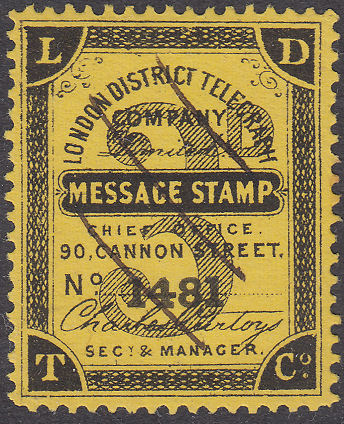 |
1/2 (3 stamps)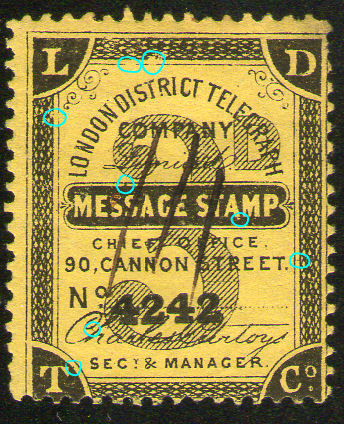 |
1/3 (4 stamps)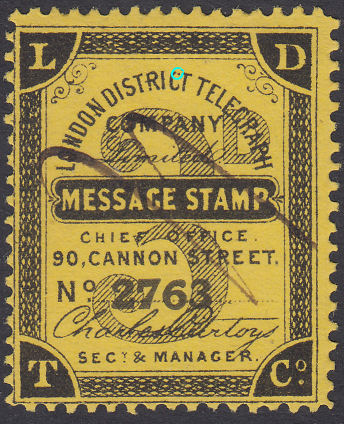 |
1/4 (4 stamps)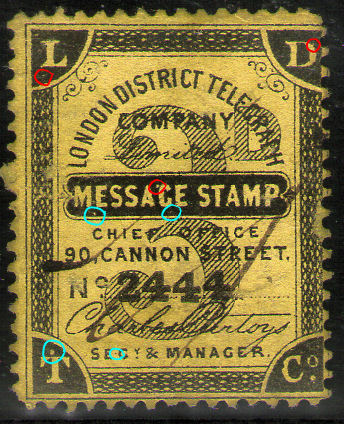 |
|
|---|---|---|---|---|---|
1/5 (7 stamps)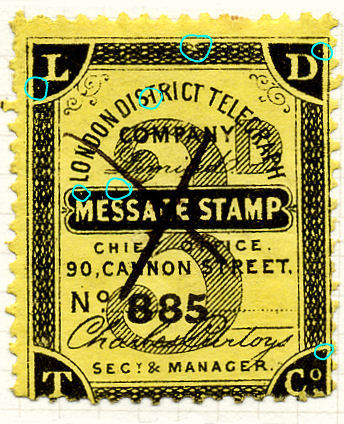 |
1/6 (5 stamps)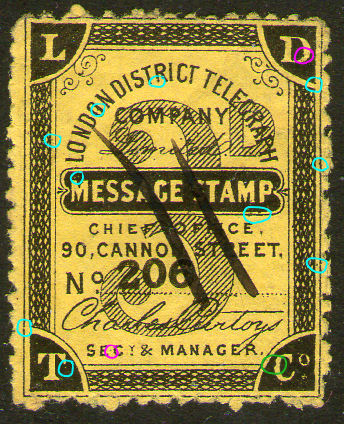 |
1/7 (6 stamps)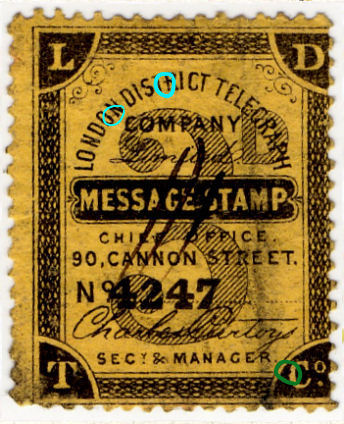 |
1/8 (2 stamps)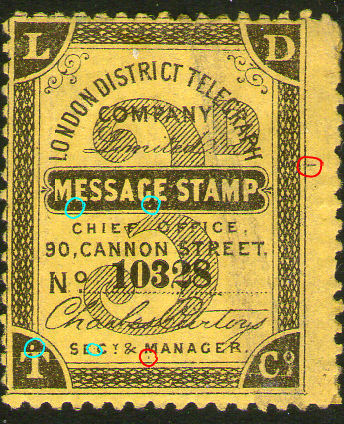 |
These have a 'notch' on the left side of the 'T' corner, but it is higher than the other ones.
| Row-2 PRIMARY flaws All have the following flaws in common:
|
| 2 | 2/1 (5 stamps)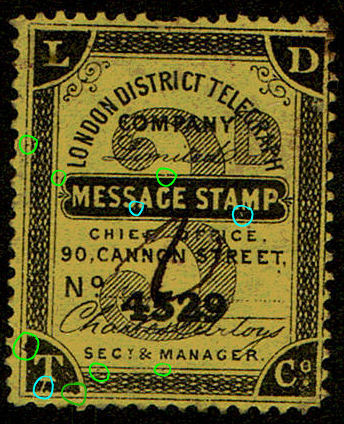 |
2/2 (5 stamps)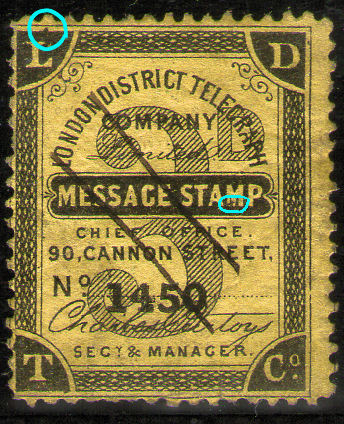 |
2/3 (4 stamps)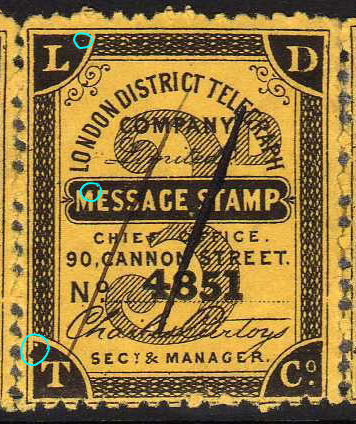 |
2/4 (9 stamps)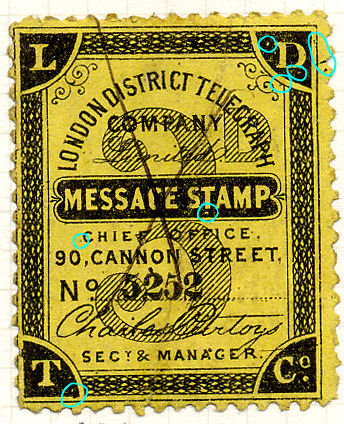 |
|
|---|---|---|---|---|---|
2/5 (7 stamps)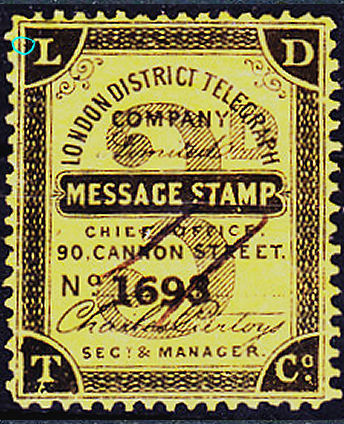 |
2/6 (4 stamps)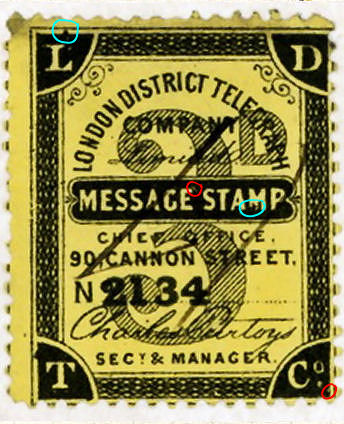 |
2/7 (3 stamps)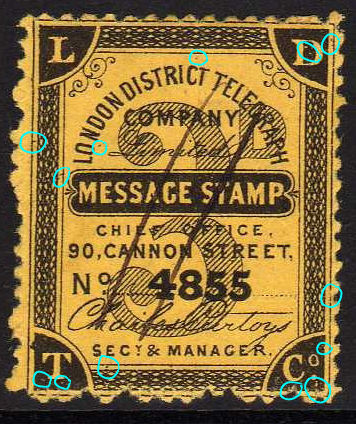 |
2/8 (9 stamps)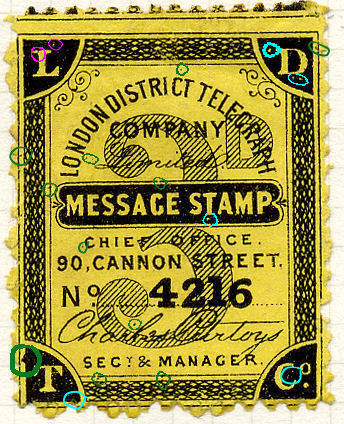 |
'r-dot' : The signature near the bottom is that of the Secretary and Manager Charles Curtoys.
There is a dot above the signature written as if the 'r' in 'Charles' was an 'i' so I will refer to it as the 'r-dot'.
The 'r-dot' can help us. It can be as above or missing or over to the right near the 'l' of 'Charles'.
It depends on the stamp position, but not necessarily on the control number.
It can be clearly seen on the strip below.
| Re-joined strip of 4 courtesy of Andrew Higson. |
 |
| 4850 to 4853 are from row 2, columns 2 to 5 |
| Row-3 PRIMARY flaws All four have the following flaws in common:
|
| 3 | 3/1 (2 stamps)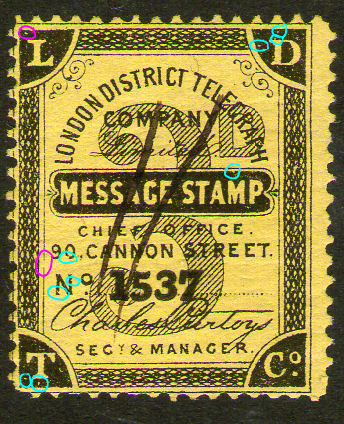 |
3/2 (2 stamps)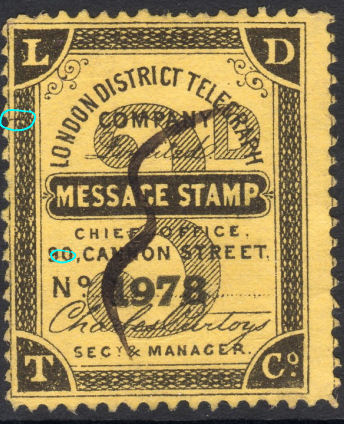 |
3/3 (8 stamps)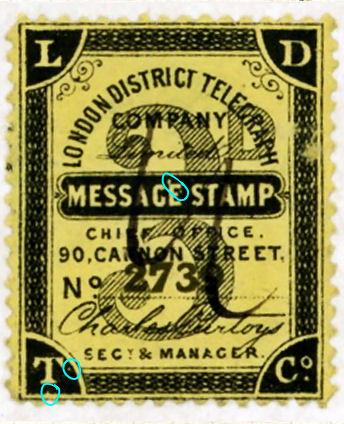 |
3/4 (6 stamps)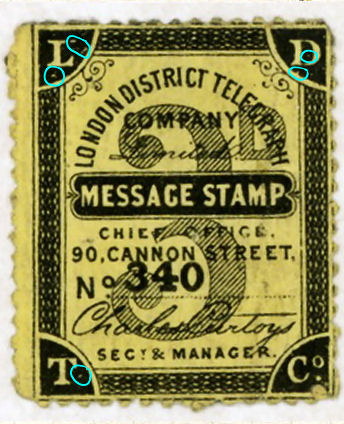 |
|
|---|---|---|---|---|---|
3/5 (2 stamps)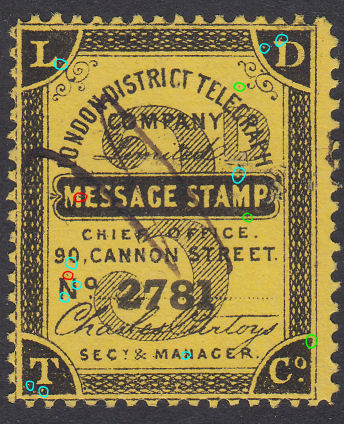 |
3/6 (8 stamps)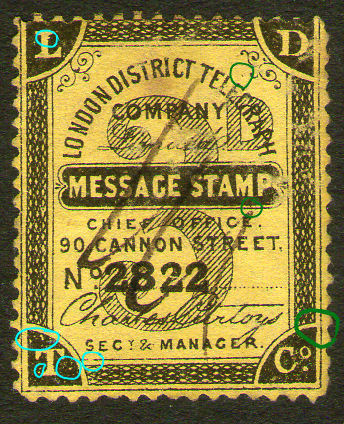 |
3/7 (1 stamp)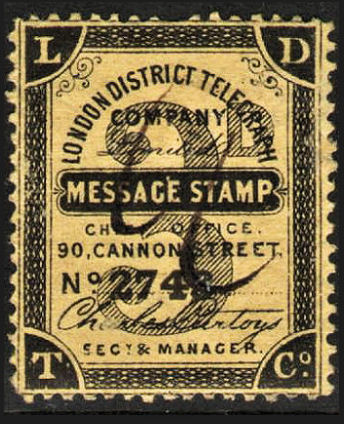 |
3/8 (2 stamp)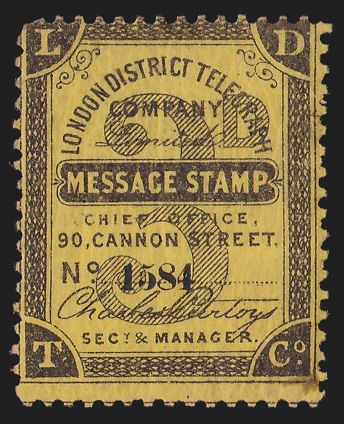 |
| Row-4 PRIMARY flaws All four have the following flaws in common:
|
| 4 | 4/1 (12 stamps)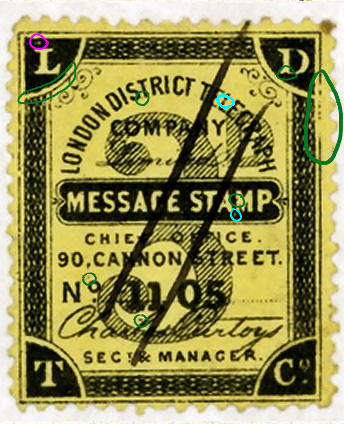 |
4/2 (6 stamps)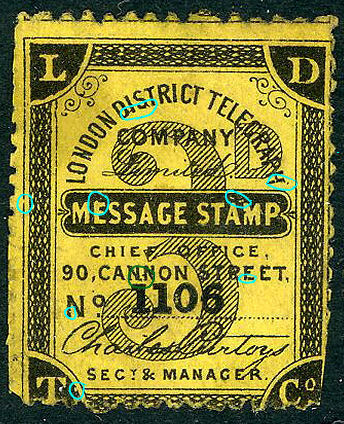 |
4/3 (3 stamps)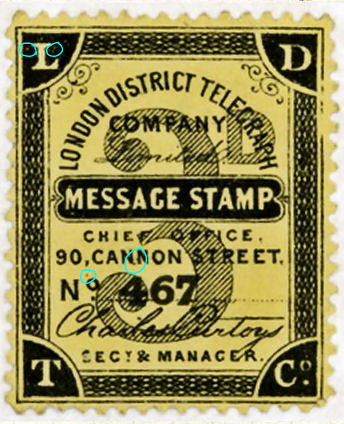 |
4/4 (4 stamps)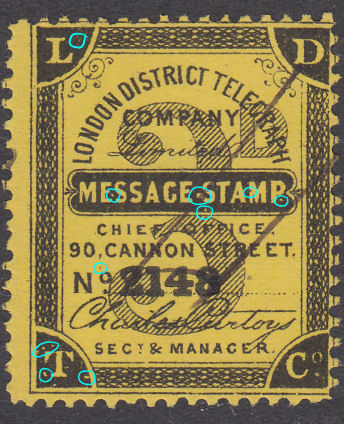 |
|
|---|---|---|---|---|---|
4/5 (4 stamps)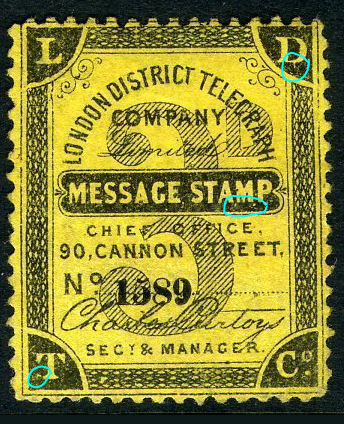 |
4/6 (2 stamps)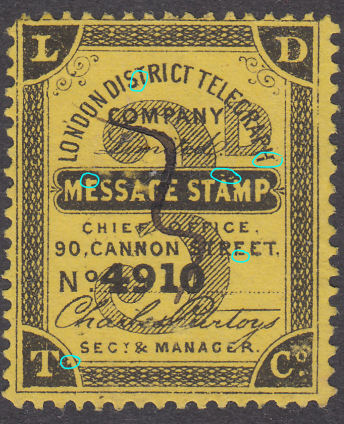 |
4/7 (5 stamps)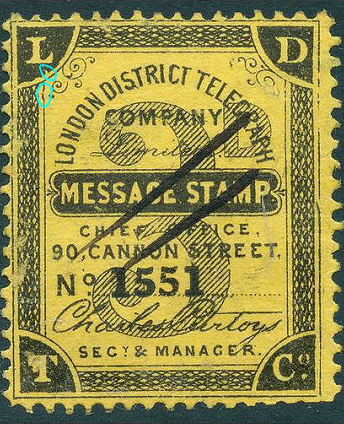 |
4/8 (3 stamps)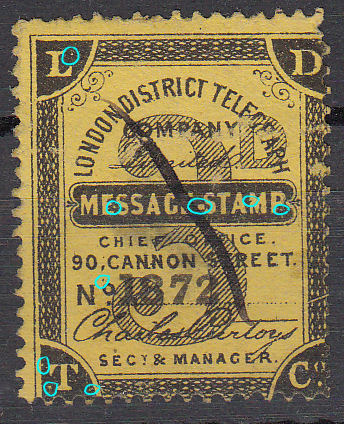 |
| Row-5 PRIMARY flaws All four have the following flaws in common:
|
| 5 | 5/1 (3 stamps)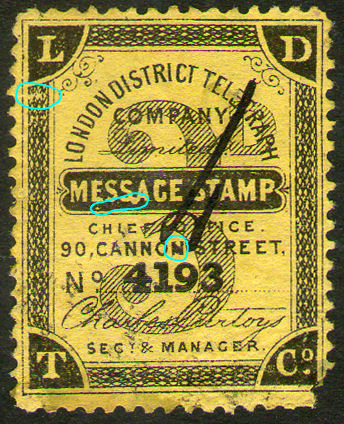 |
5/2 (3 stamps)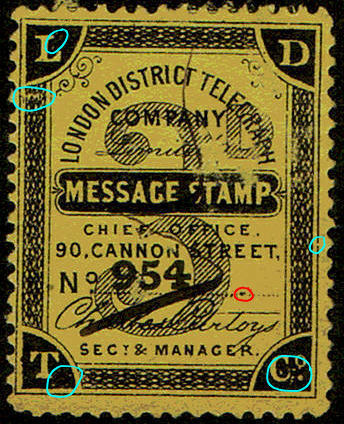 |
5/3 (4 stamps)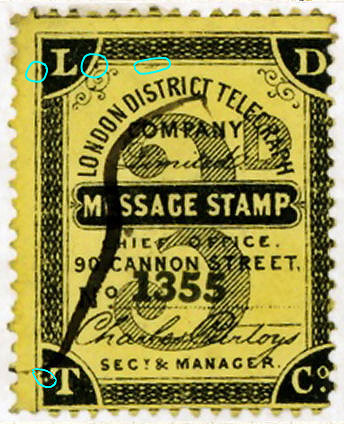 |
5/4 (3 stamps)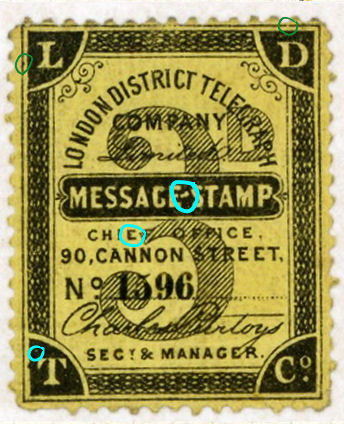 |
|
|---|---|---|---|---|---|
5/5 (5 stamps)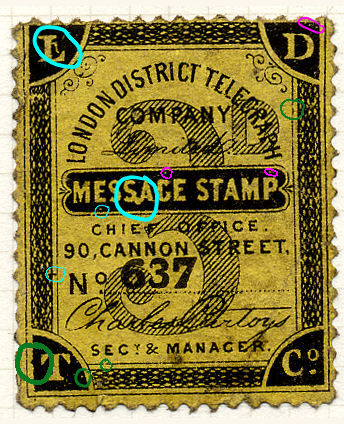 |
5/6 (4 stamps)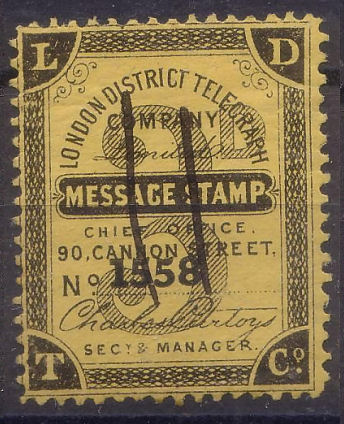 |
5/7 (6 stamps)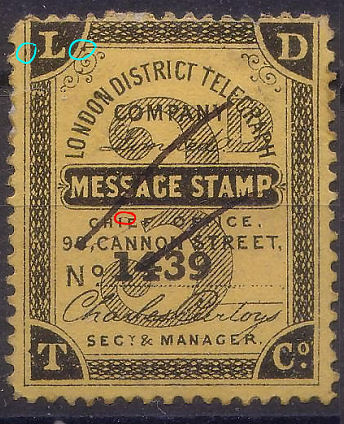 |
5/8 (6 stamps)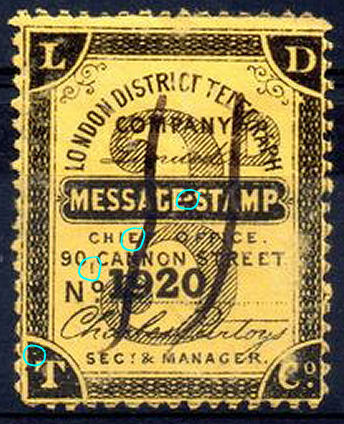 |
Until recently, the lack of any blocks and rarity of even pairs made this much more difficult.
This scan kindly provided by Steve Lawrie has substantiated much of the 'detective work'.
It certainly makes it clear that there were 8 stamps per row.
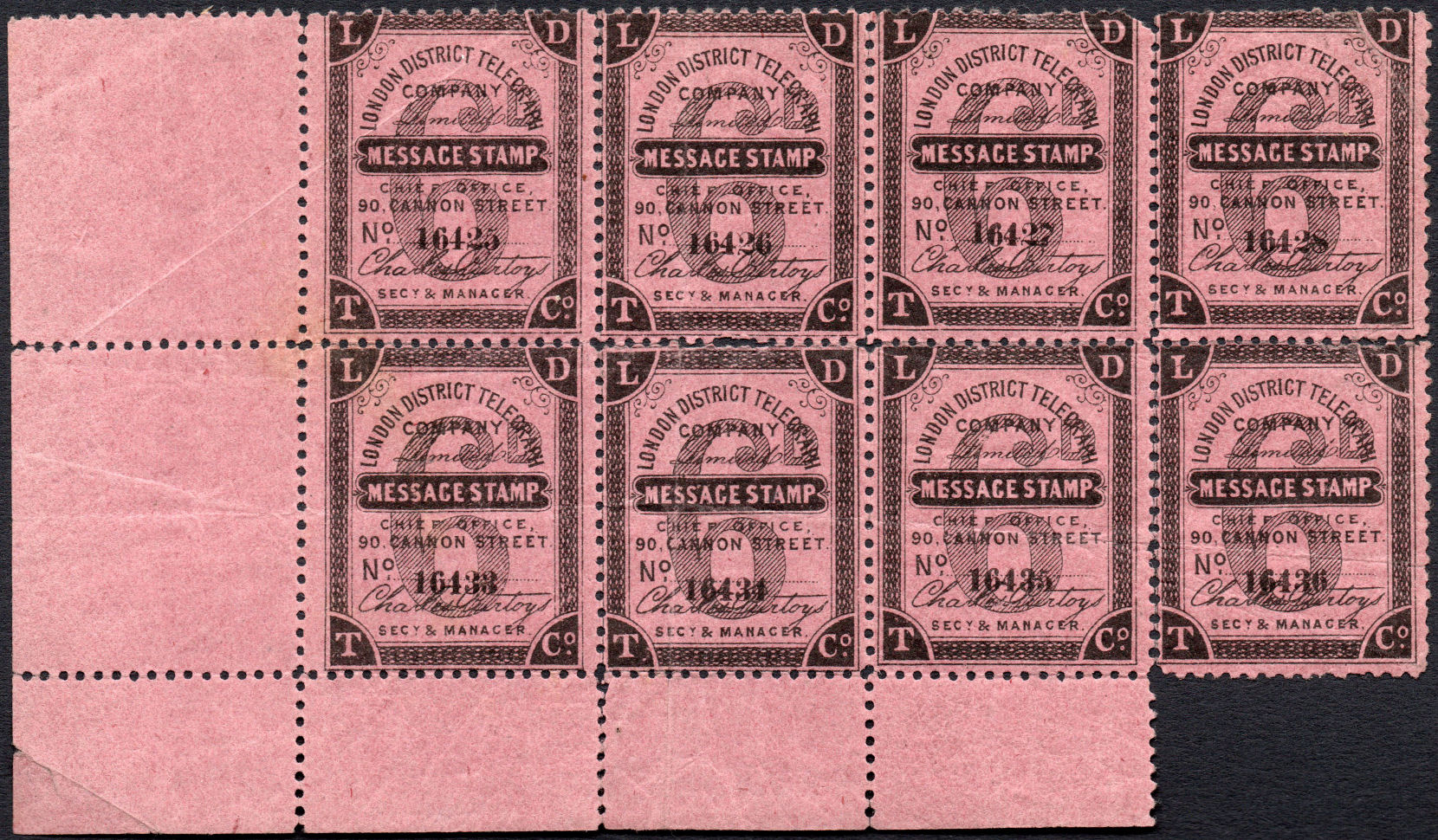
I will refer to this in the text as the 'MB-block' (Martien Blank initially made me aware of it. Steve Lawrie later bought it.)
| Courtesy of Steve Lawrie. |
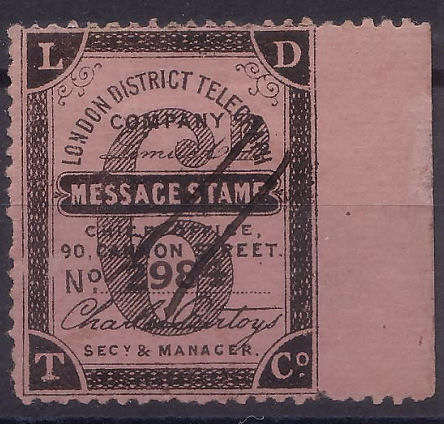 |
| 2984 - 75/3/8 (Group 2) With imperf. edge. |
Control 2984 above is the only one of these I have seen without perforations down the side.
The 'MB-block' is perforated on the left and other examples from column 8 are perforated on the right.
Was this an error, or was this done for a reason ?
The arrangement of the 3d plate was fairly simple with the whole of each row derived from the same prototype (Group).
I expected the same of the 6d, but it was clearly not the case. some features on stamps also appear to have 'faded' over time.
See Row-1, stamp 1 , Row-2, stamp 1 , Row-4, stamp 2 and Row-5, stamp 7
I also had an expectation that some may have been printed as booklet panes.
Despite looking for evidence of this, I have to conclude that all the examples I have seen were printed in sheets of 40 stamps as with the 3d stamps.
The large and small controls fit the same pattern, but some slight differences suggest some plate-cleaning at some stage.
I have only scans of two examples of the earlier manuscript controls which are very similar to the 'Group 2' stamps below.
| Group 1 | Group 2 | Group 3 | Group 4 | Group 5 |
| R1/C1 | R1/C2 | R1/C3 | R1/C4 | R1/C5 | R1/C6 | R1/C7 | R1/C8 | |
| R2/C1 | R2/C2 | R2/C3 | R2/C4 | R2/C5 | R2/C6 | R2/C7 | R2/C8 | |
| R3/C1 | R3/C2 | R3/C3 | R3/C4 | R3/C5 | R3/C6 | R3/C7 | R3/C8 | |
| R4/C1 | R4/C2 | R4/C3 | R4/C4 | R4/C5 | R4/C6 | R4/C7 | R4/C8 | |
| R5/C1 | R5/C2 | R5/C3 | R5/C4 | R5/C5 | R5/C6 | R5/C7 | R5/C8 |
It is possible that the layout was intended to be the same as with the 3d stamps. My suspicion is as follows:
Two intermediate stones of 4 stamps derived from the same prototype (a manuscript type ?) were prepared,
but instead of the pairs staying together in the same finished row, they got mixed up.
It is possible that the manuscript type were in booklets of six and that five of these were used as prototypes for the later plates of 40.
With the manuscript types being so rare though, this has to remain conjecture.
I have broken the control numbers down into Sheet Number(1+), Row Number(1 to 5) / Stamp Number(1 to 8).
Click a stamp to go to the details for it.
Row-1 PRIMARY flaws
|
| 1 | Group 4 (6 stamps)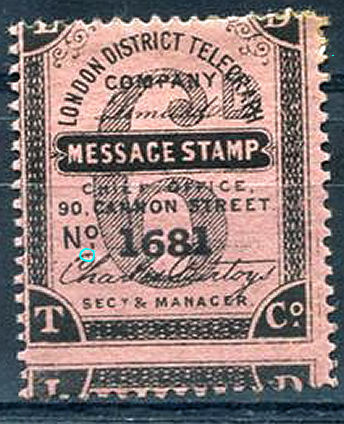 |
Group 4 (3 stamps)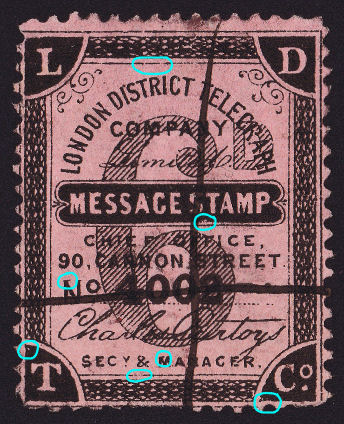 |
Group 4 (5 stamps)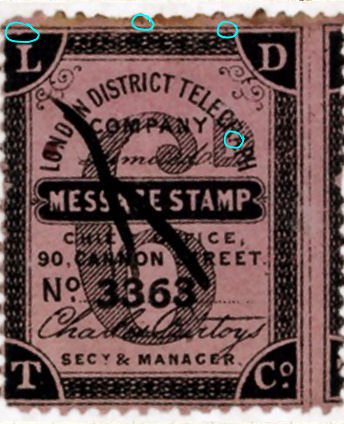 |
Group 4 (3 stamps)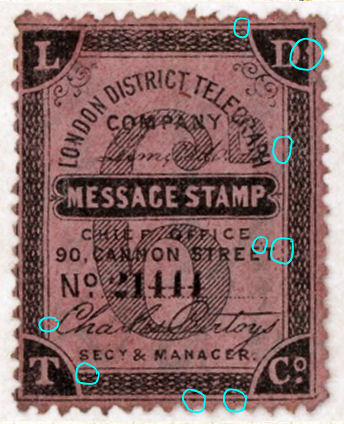 |
|
|---|---|---|---|---|---|
Group 3 (4 stamps)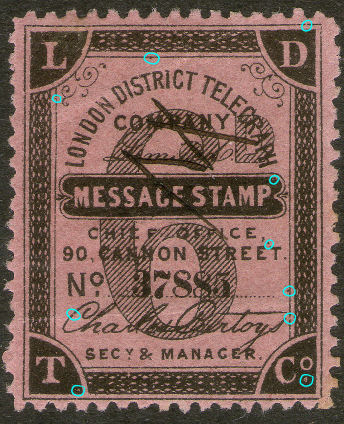 |
Group 3 (4 stamps)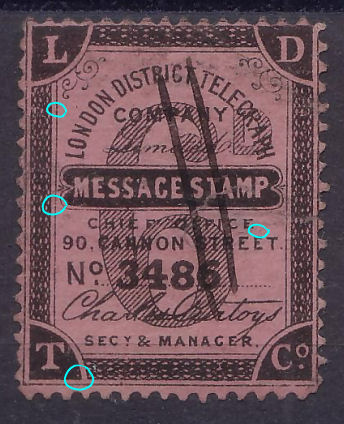 |
Group 3 (4 stamps)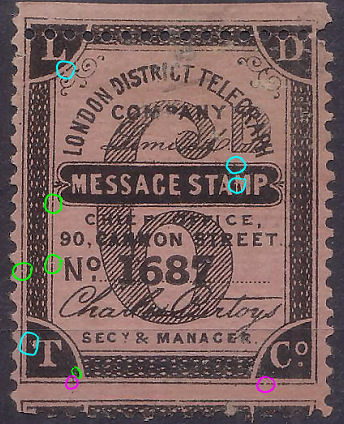 |
Group 3 (2 stamps)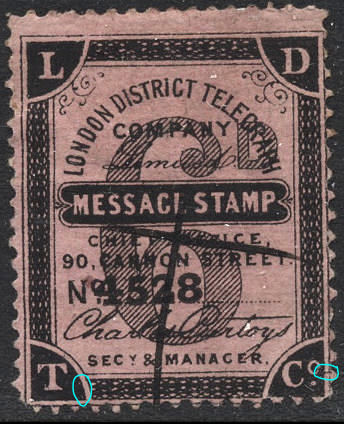 |
Row 2 PRIMARY flaws
|
| 2 | Group 2 (4 stamps)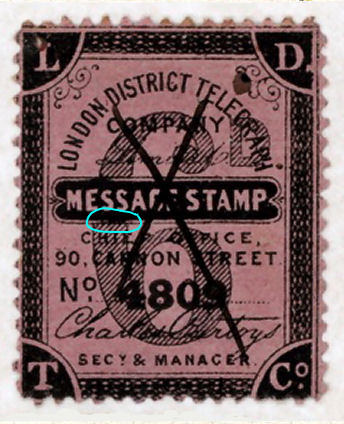 |
Group 2 (2 stamps)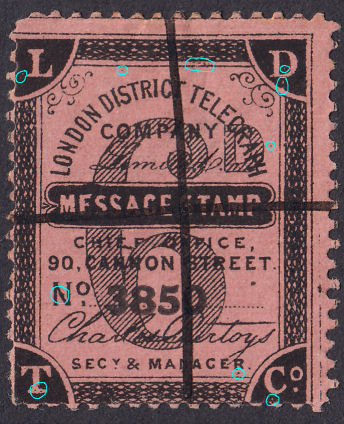 |
Group 2 (5 stamps)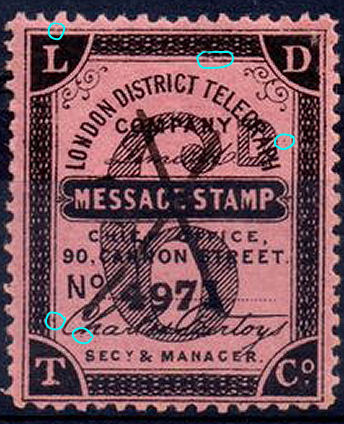 |
Group 2 (7 stamps)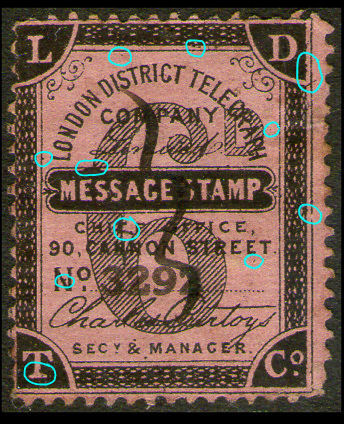 |
|
|---|---|---|---|---|---|
Group 1 (8 stamps)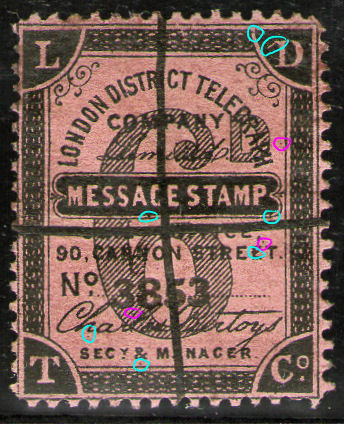 |
Group 1 (1694)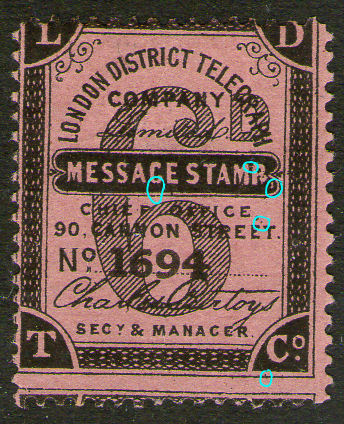 |
Group 1 (8 stamps)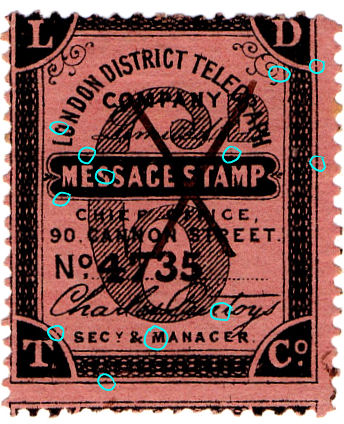 |
Group 1 (6 stamps)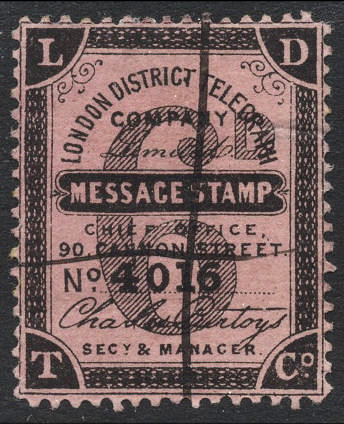 |
Row-3 PRIMARY flaws
|
| 3 | Group 3 (9 stamps)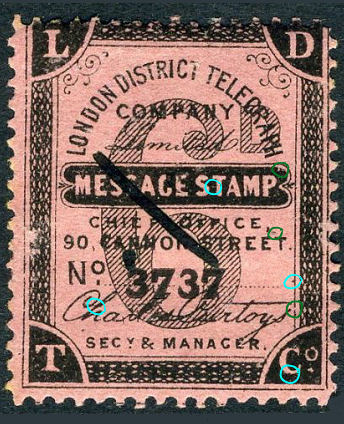 |
Group 3 (3 stamps)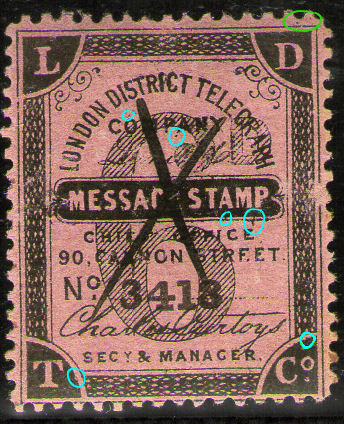 |
Group 3 (5 stamps)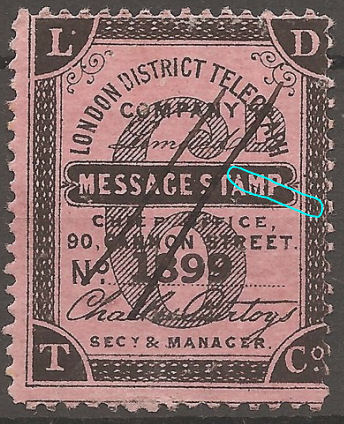 |
Group 3 (2 stamps)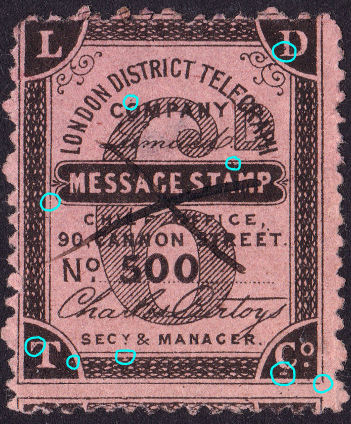 |
|
|---|---|---|---|---|---|
Group 2 (5 stamps)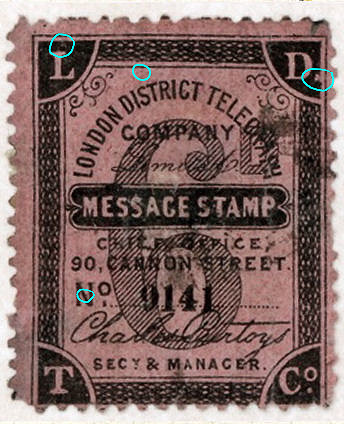 |
Group 2 (5 stamps)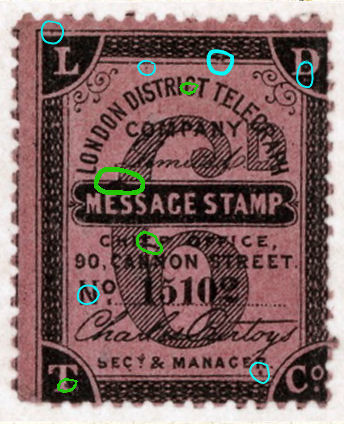 |
Group 2 (4 stamps)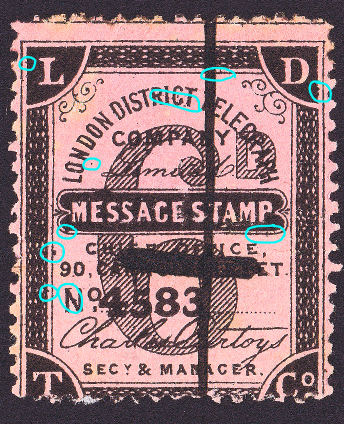 |
Group 2 (6 stamps)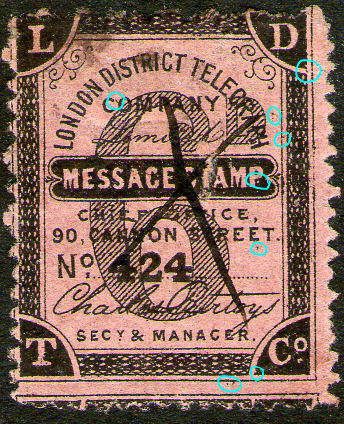 |
Row-4 PRIMARY flaws
|
| 4 | Group 4 (3 stamps)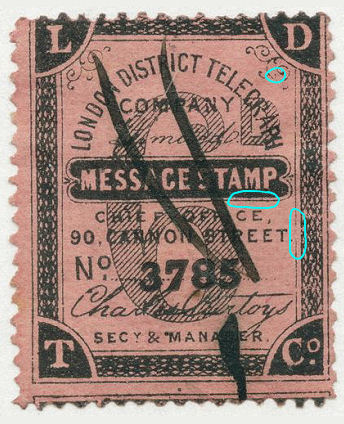 |
Group 4 (4 stamps)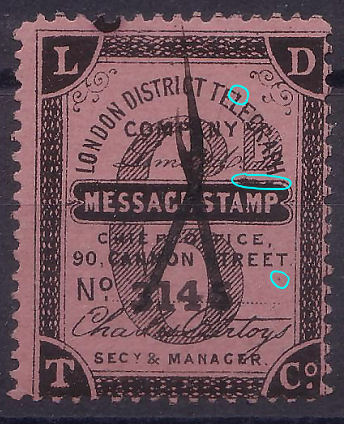 |
Group 4 (4 stamps)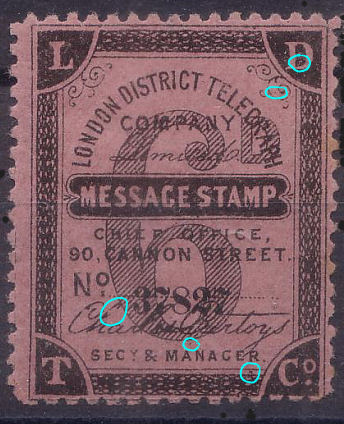 |
Group 4 (7 stamps)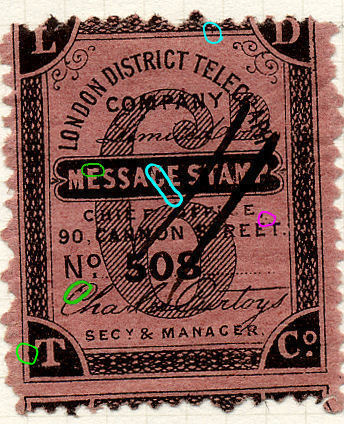 |
|
|---|---|---|---|---|---|
Group 1 (4 stamps)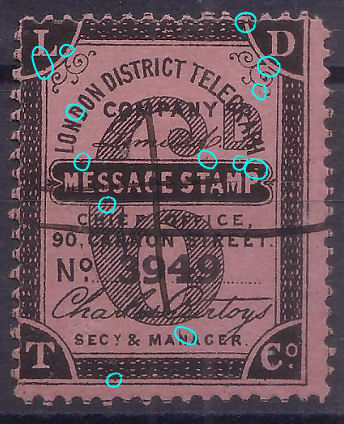 |
Group 1 (2 stamps)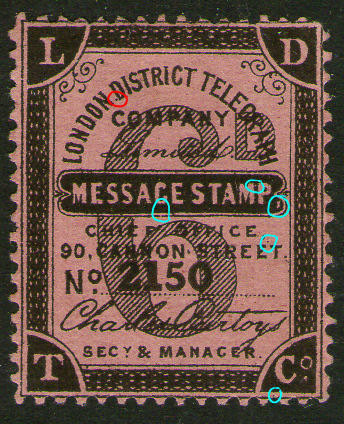 |
Group 1 (4 stamps)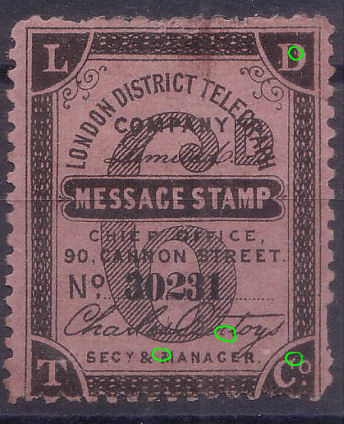 |
Group 1 (5 stamps)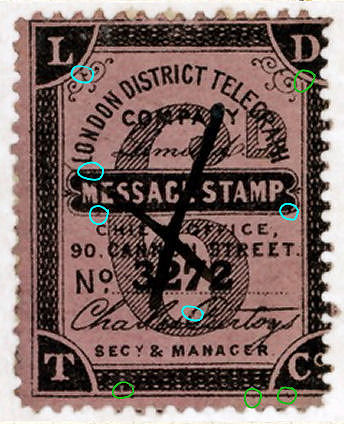 |
| Row-5 PRIMARY flaws These are all from Group 5 |
| 5 | Group 5 (8 stamps)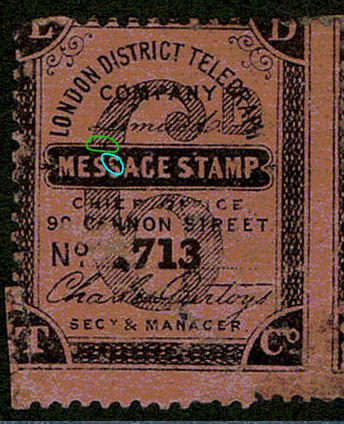 |
Group 5 (7 stamps)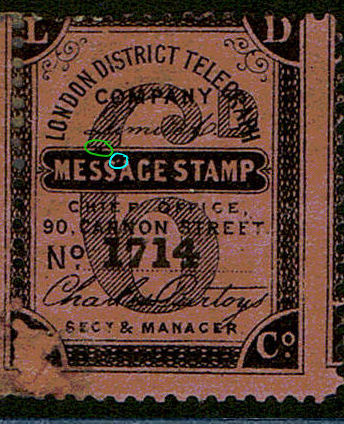 |
Grp 5 (3 stamps)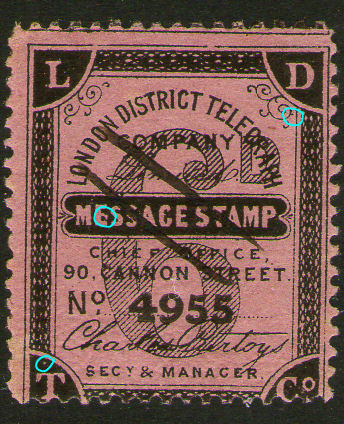 |
Group 5 (5 stamps)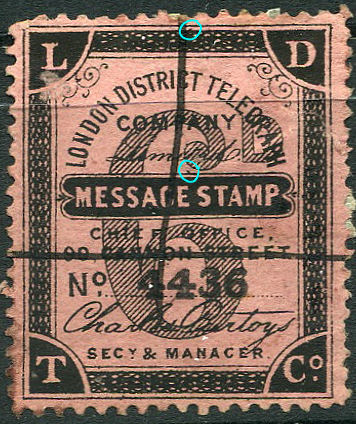 |
|
|---|---|---|---|---|---|
Group 5 (3 stamps)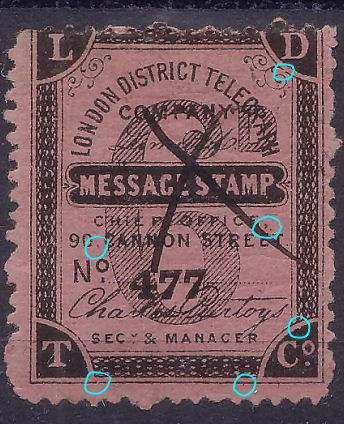 |
Group 5 (5 stamps)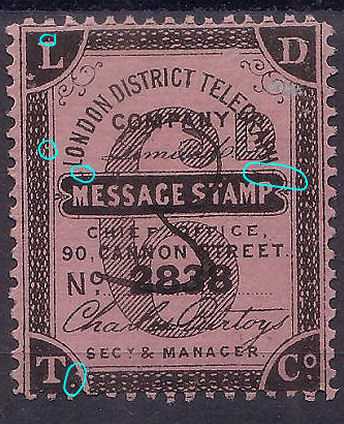 |
Group 5 (6 stamps)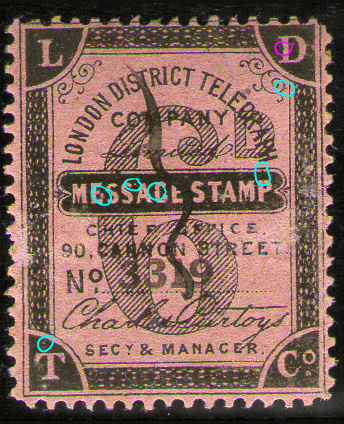 |
Group 5 (6 stamps)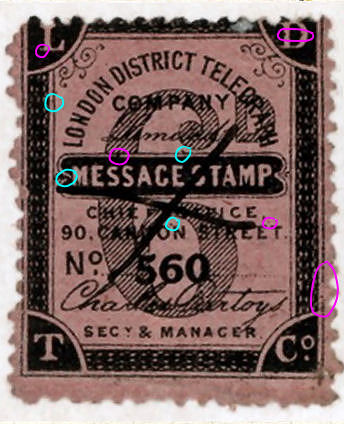 |
Here is an interesting series:
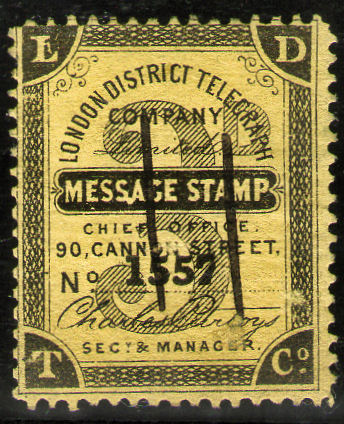 |
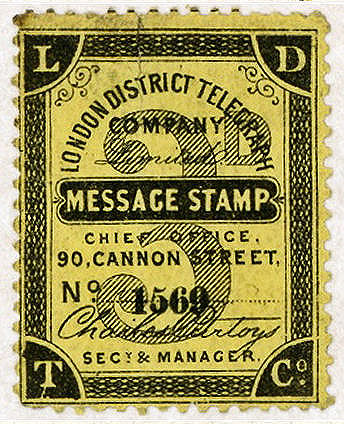 |
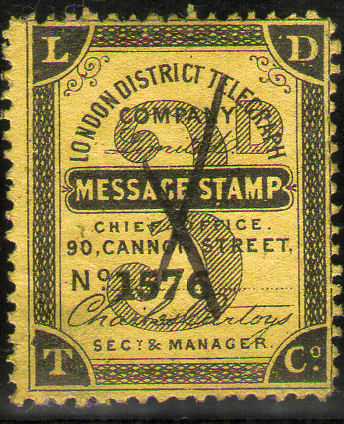 |
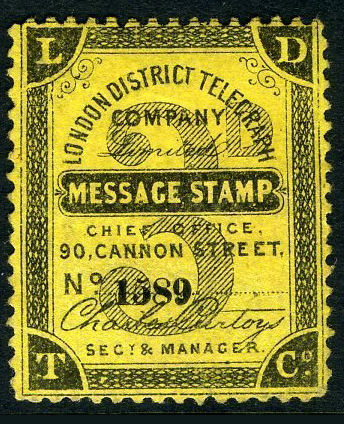 |
| 1557 (large - 39/5/5) | 1569 (small - 40/2/1) | 1576 (large - 40/2/8) | 1589 (small - 40/4/5) |
I think it unlikely that it is the same 'sheet 40' for both large and small controls.
I think it is possible that the same number may exist with large and small controls.
There are several possibilities, either large and small were used concurrently from the beginning, and the large either discarded (or not) when it got to maximum count.
Alternatively The large could have been used first and replaced by the small when it got to the maximum count (or before).
I do not see the small being used first, then replaced by the large (having less digits) unless of course it had more digits that never got used.
However the highest count I have seen is less than 40,000 and I'm sure we would have seen numbers above that if they reached maximum count before the large controls.
Look closely at the pair below. It may provide the answer.
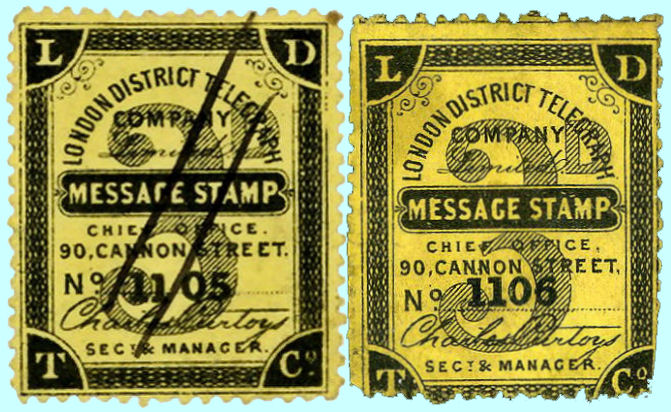 |
| 1105 (28/4/1) fairly well centred, and 1106 (28/4/2) poorly centred. I would have expected this (digitally constructed) pair to fit together better if they were from the same sheet. However, most of my reconstructions below are compatible, so I suspect that the re-use was only until a replacement machine with more digits could be obtained. Alternatively, all the used examples are from a narrow time period (the takeover) and previous ones were destroyed. It should also be noted though that as well as the 4879/4880 pair shown, I have seen 4886 and 4893, but nothing higher than these, another indication of a narrow time slice. |
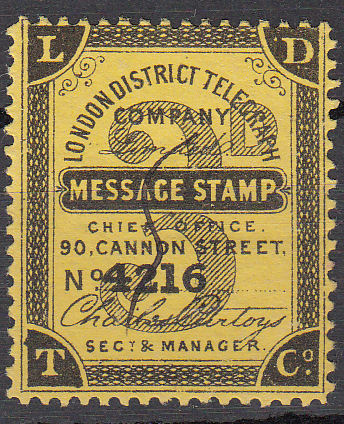 |
 |
| Courtesy of Martien Blank. | Courtesy of the late Mike Holt. (Now also owned by Martien Blank). |
| Two examples of 3d, large control 4216 (row 2, column 8). Used and unused. Clearly the numbers were re-used. An adjoining stamp is only likely to match one of them. |
|
The most telling piece of evidence is the fact that most of the cancelled large control stamps still have their gum.
This implies that they were pre-cancelled ready for use, but not in fact used.
Almost certainly this is because the Post Office takeover intervened, which would imply that these were the type last used.
Enter a Control number to check
| Sheet (1+) | Row (1->5) | Column (1->8) |
|---|---|---|
This has allowed me to translate the control numbers above to a 3D co-ordinate giving me the sheet, row and column.
* Assuming the highest control number seen reflects the quantity issued.
These figures beg an explanation.
The survival rate for Large controls is higher for used stamps, whereas for Small controls it is higher for unused.
Fortunately there may be an explanation.
Steven Roberts records about halfway down
Competitors Allies, the Companies' claim:
“The low rate charged for messages, sixpence for fifteen words exclusive of address, and half-rates for pre-paid answers,
does not by any means affect the precautions taken for the safe keeping and delivery of the messages entrusted to the Company’s care.
Each receives its particular and goes through its regular course from desk to desk and room to room, until its work is finally accomplished,
when it is carefully put up in company with all papers bearing in any way upon it, and preserved for three months
in one of the numerous presses close at hand, from thence to descend at the end of that period to the cellar,
after a two years’ sojourn in which it is finally destroyed.”
The used LDTC stamps currently available can then be seen as (primarily) a sample of
the last two years or so of the companies telegraph forms, 'liberated' at the time of its' takeover.
These would seem to be mostly Large controls! This is a great surprise to me, as I expected the small controls with more digits to come later as usage increased.
The pair below though shows that the numbers can be used over and over, but pairs tend to mostly match-up and I would expect to see some in the 9000's.
 |
 |
| Courtesy of Martien Blank. | Courtesy of the late Mike Holt. (Now also owned by Martien Blank). |
| Two examples of 3d, large control 4216 (row 2, column 8). Used and unused. An adjoining stamp is only likely to match one of them. |
|
Possibly each branch was sent a batch of sheets and used them sequentially, with the used examples coming from only one or two branches.
Unused examples would be a combination of those deliberately 'collected' plus leftovers after the Post Office takeover.
There is one point though that does not appear in the statistics.
The cancelled examples with large controls very often still have gum. Perhaps they should not be classed as used at all.
There are two possibilities as I see it:
1) When the company was shut down, they cancelled them to invalidate them, and sold them to the stamp trade.
2) Because of the volume of business during working hours, it was standard practice to pre-cancel them to save time.
The Company was being taken over and the stamps were no longer valid anyway. Why cancel them ?
The other Private Telegraph Companies did not appear to have found it necessary.
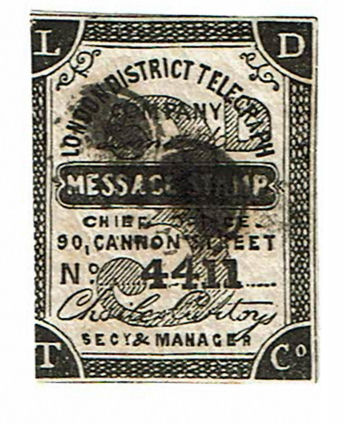
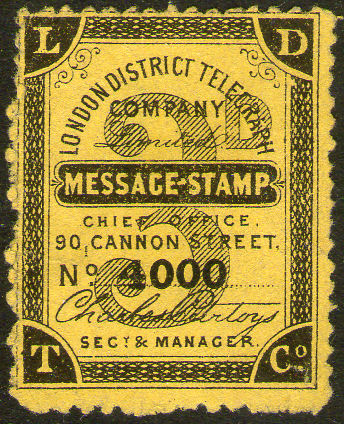
The stamp on the left looks superficially like a normal stamp on the right, but on close examination differs in just about every detail.
I have paired it with number 4000, position R5 C8 because of the similar comma after '90'. The large 4-digit numbers appear to have been the latest,
which would rule out it being an essay or proof. An attempt to defraud collectors would likely target a scarcer stamp, leaving the possibilities that
someone had a plan to either create an image for a stamp catalogue or album, or to defraud the L.D.T.C.
I have no explanation for the strange cancels. - Image courtesy of Edward Coombes.
further information regarding this would be most welcome.
| Shortcuts to different sections | |||||
| Message Forms | Forwarded Forms | Delivery Forms | Telegram Envelopes | Receipts | Miscellaneous |
An unused Message Form, courtesy of Dr Mark Gibson. (10,000 Printed 11/2/60 - My Reference: LDTC_1-1860-1
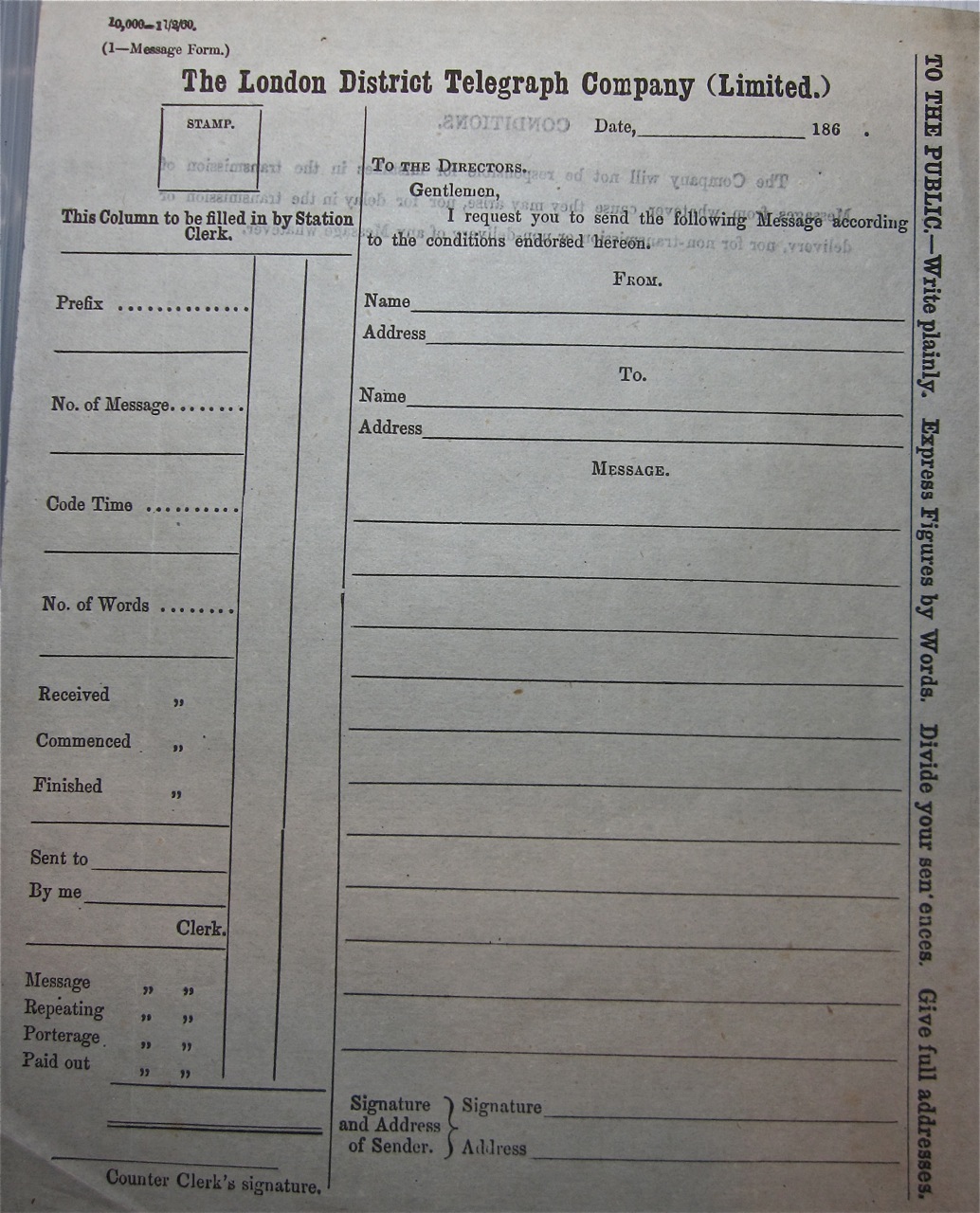
Message forms:
| Provisional Reference | L & H number | Date on form | Date used | Size mm. | Number of Branches | Chief Office |
|---|---|---|---|---|---|---|
| LDTC_1-1860-1 | - | 11/2/1860 | - | ? | - | - |
Forwarded Form 1, courtesy of Edward Coombes. (Used 19 April 1864 - FRONT) - My Reference: LDTC_F1864-1
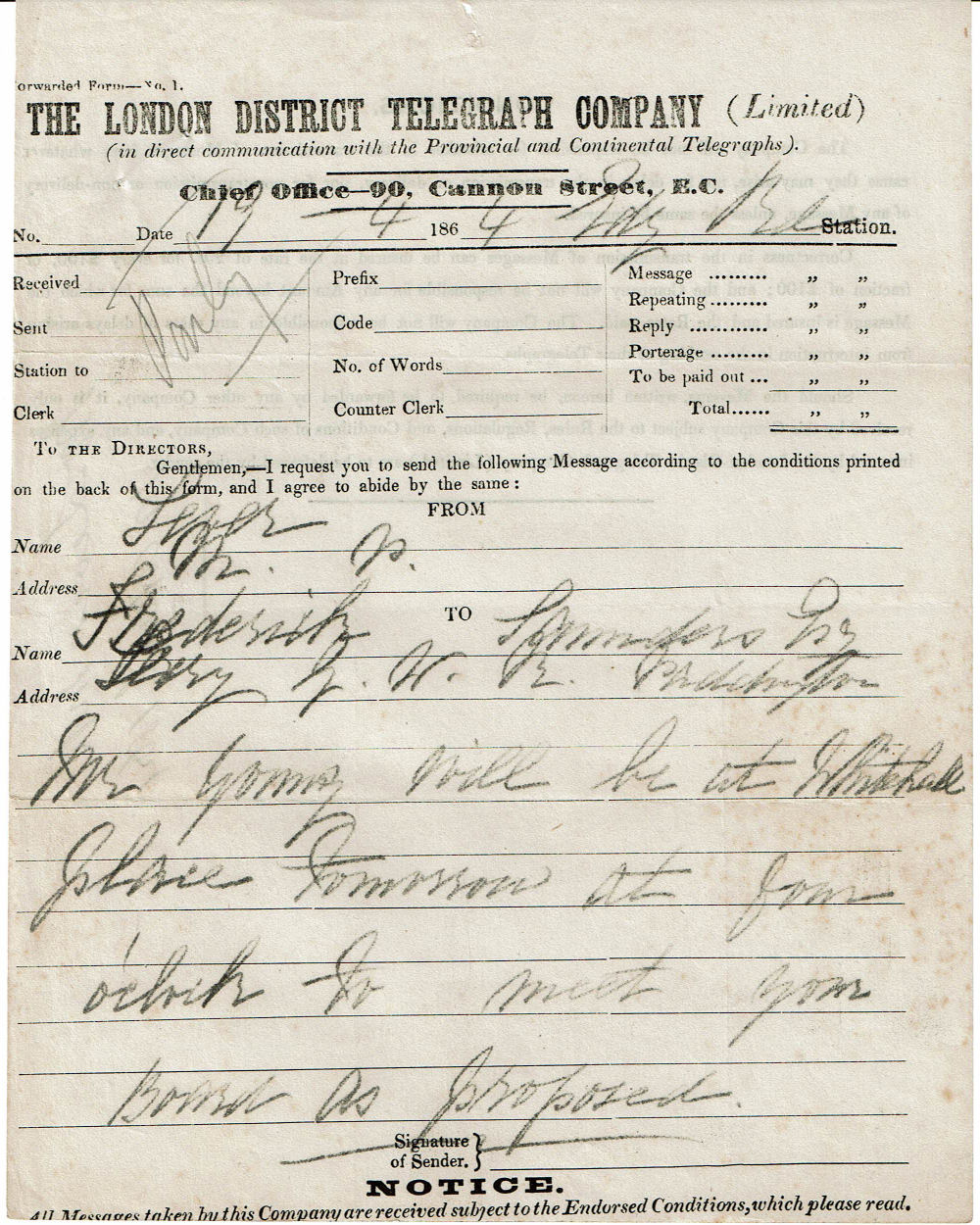
This was from M.P. Lever, presumably John Orrell Lever (1824-1897), who was M.P. for Galway Borough at the time.
April 1864 Forwarded Form - BACK, showing the conditions of the LDTC at that time.
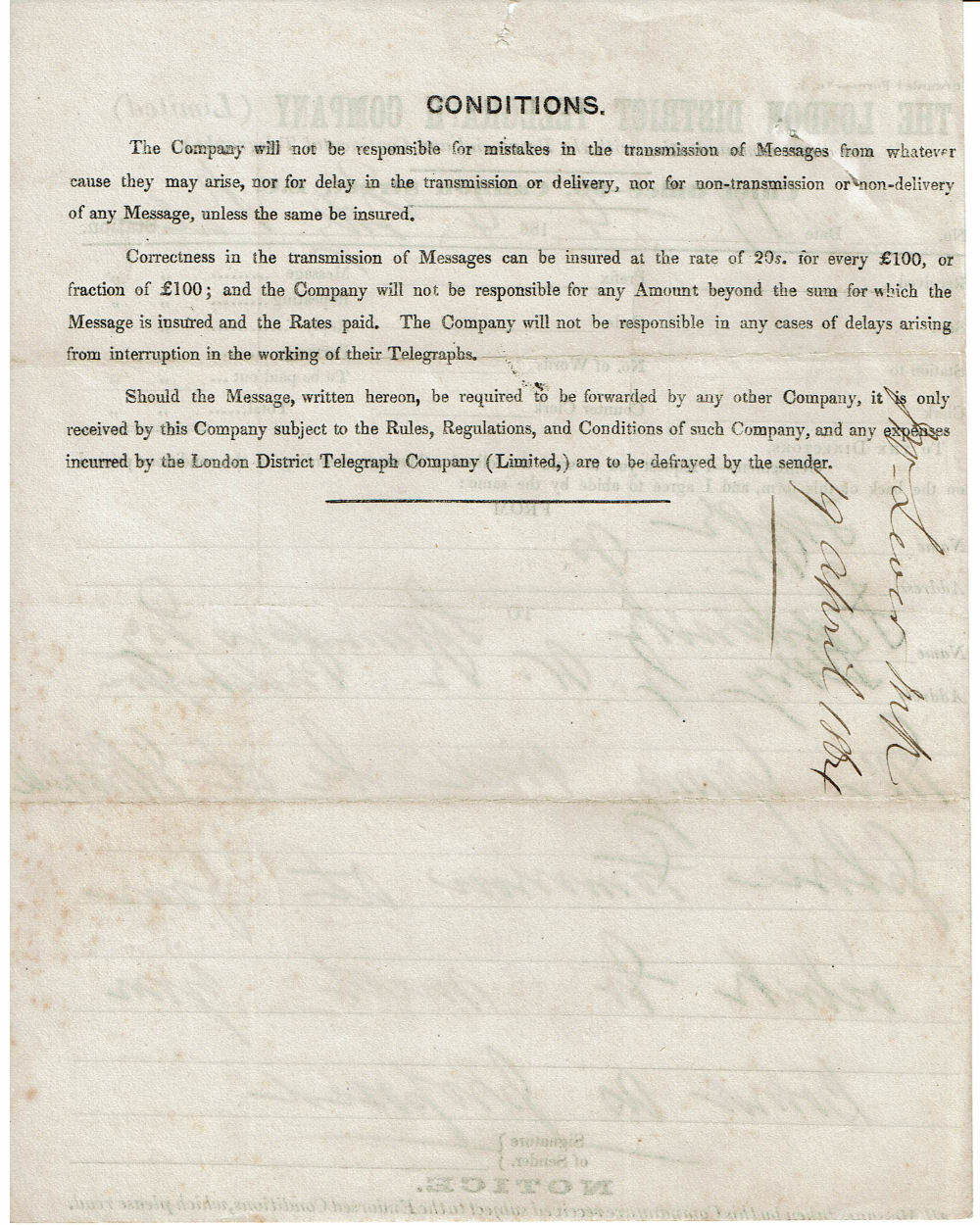
Strangely there appears to have been no requirement to write clearly.
Forwarded Form 1, courtesy of Mark Gibson. (Undated, but since this is London & Provincial, must be 1867 or later - FRONT) - My Reference: LDTC_F1867-1
Now headed "The London & Provincial Telegraph Company (Limited)" at 101 Cannon Street.
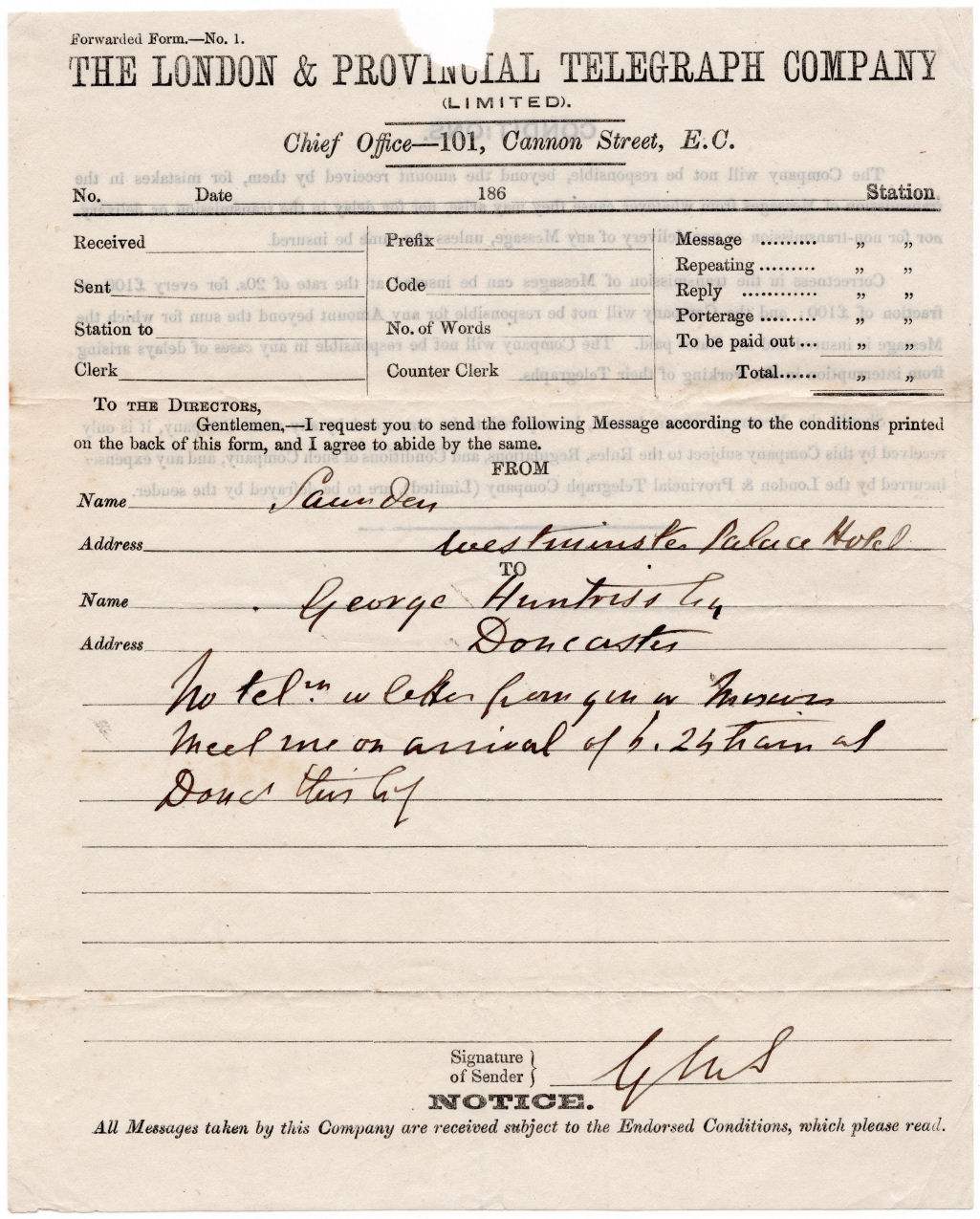
This was from their station at the Westminster Palace Hotel.
1867 Forwarded Form - BACK, showing the conditions of the LDTC at that time.
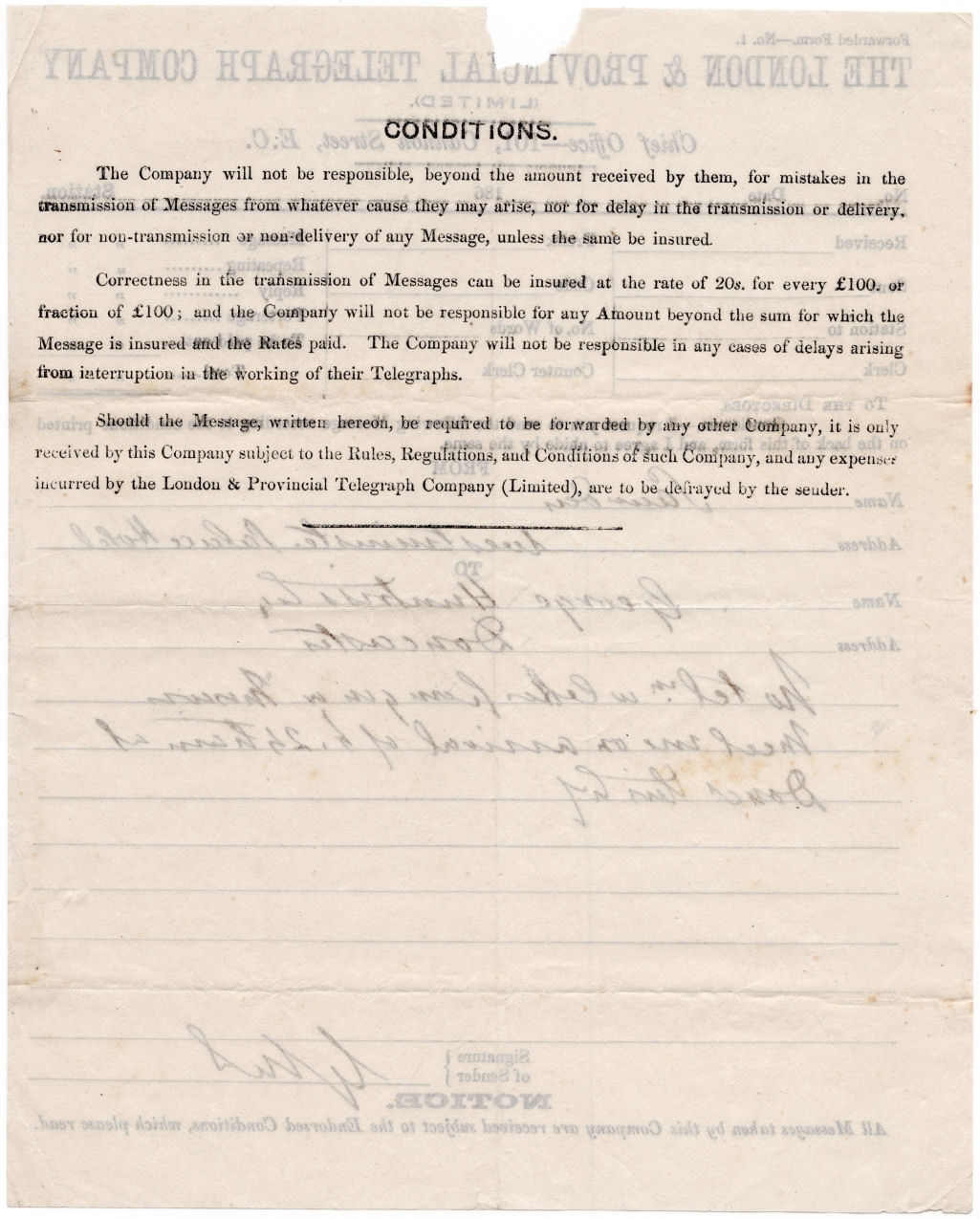
This has inserted at the top "beyond the amount received by them", and the company name has been changed at the bottom.
Forwarded form 1 :
| Provisional Reference | L & H number | Date on form | Date used | Size mm. | Number of Branches | Chief Office | Advertisements |
|---|---|---|---|---|---|---|---|
| LDTC_F1864-1 | - | 186_ | 19/4/1864 | 166 x 211 | - | 90 Cannon Street | - |
| LDTC_F1867-1 | - | 186_ | - | 171 x 213 | - | 101 Cannon Street | - |
Really not much on this, but further examples may prompt column-heading additions / changes.
A Delivery Form, courtesy of Steve Lawrie. (10,000 Printed 9/1/60, used 2/2/60 - FRONT) - My Reference: LDTC_1860-1
This appears to be the actual form described as the earliest seen by L & H as #1 on page 27.
The forms I have seen after this are marked "[Delivery Form, No. 3.]" without printed date, quantity or revision number.
Charges are shown on the back, sometimes with dated changes.
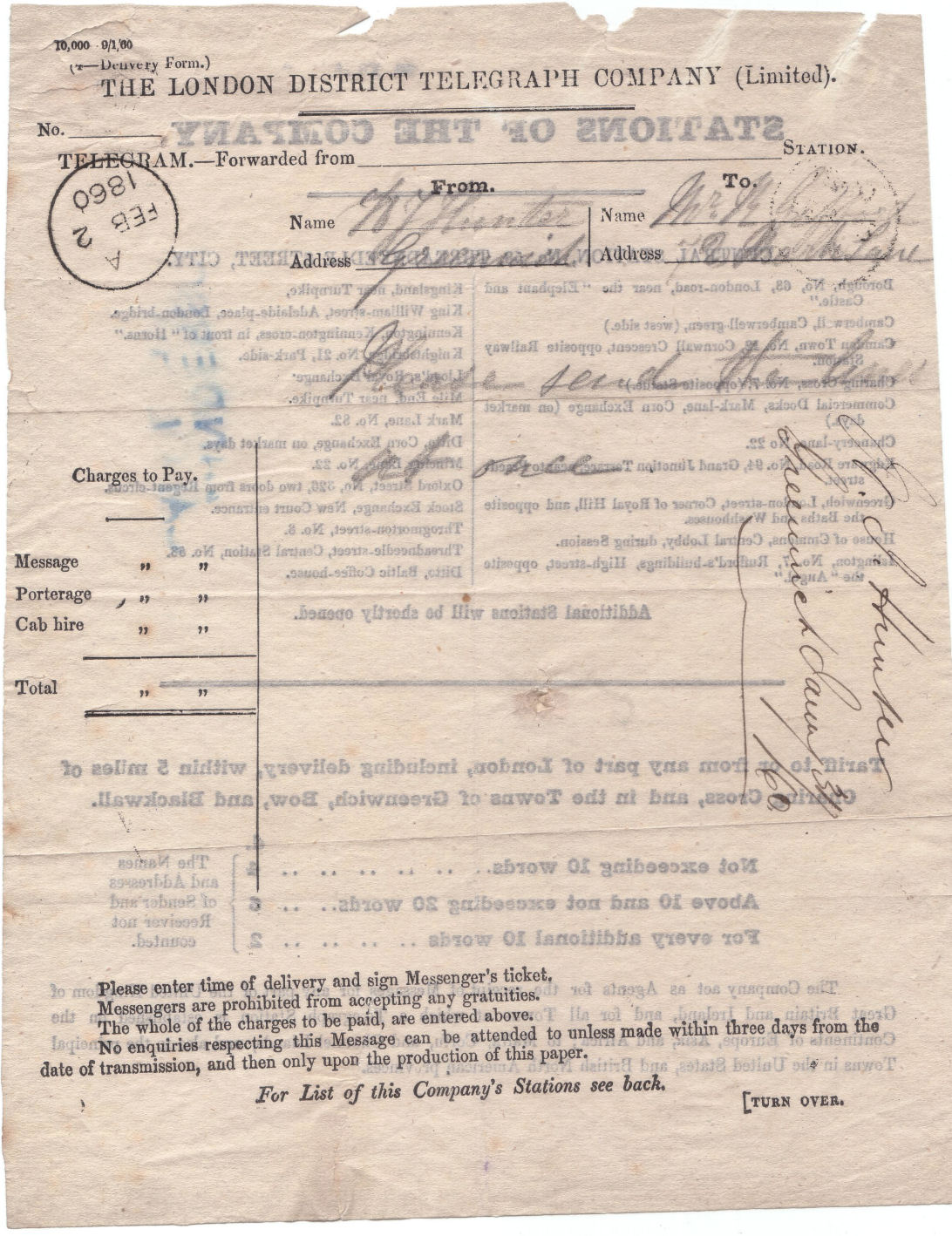
Delivery Form, used 2/2/60 - BACK, showing Central Station address and 24 Branches together with original pricing.
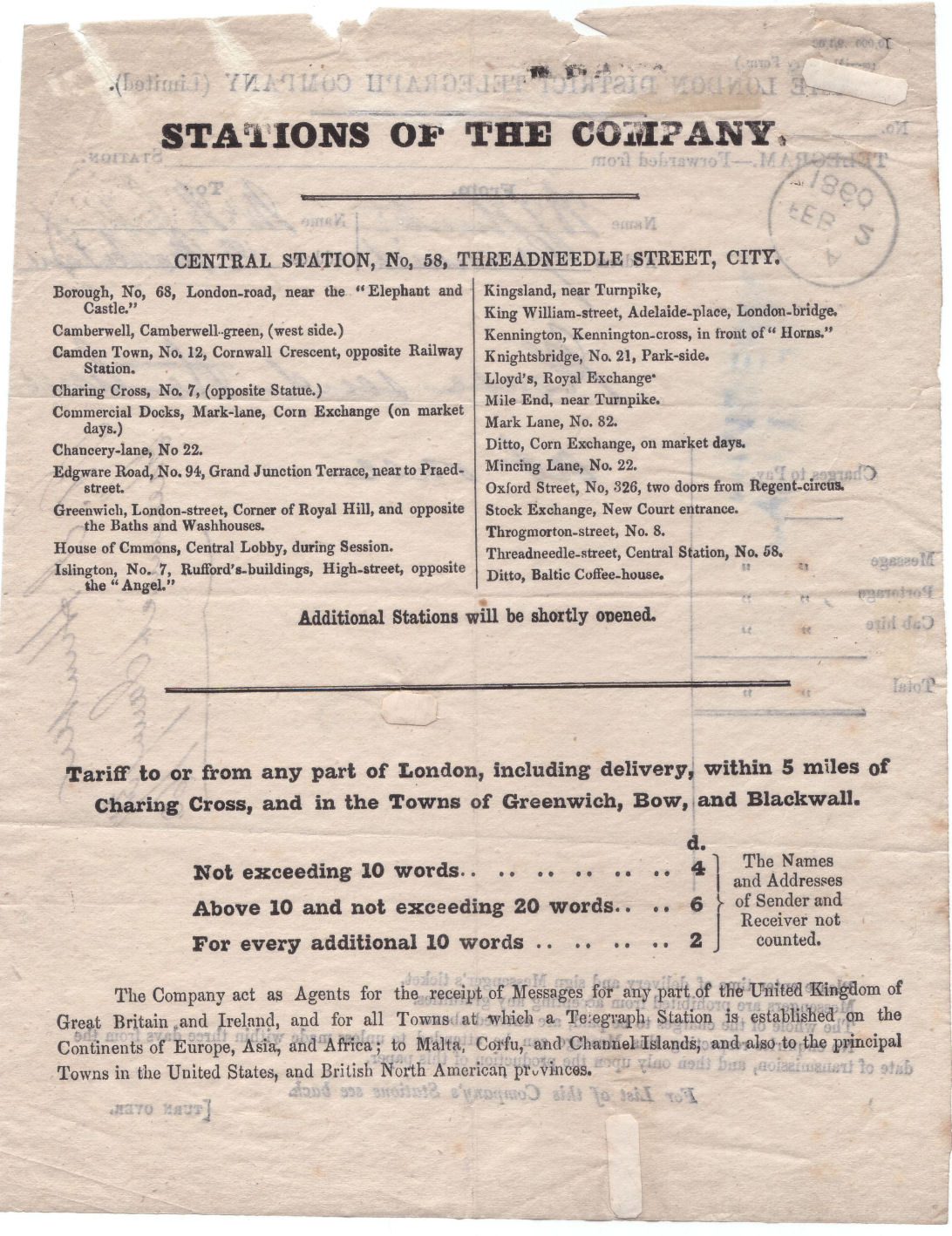
This form of 1860 shows a clear purpose for 4d stamps, but has no use for 3d stamps.
For purposes of comparison, other than the Central Office, this lists 24 other stations.
No. 3 Delivery Form (now No. 3), courtesy of Edward Coombes. used 18 September 1861. - My Reference: LDTC_3-1861-1
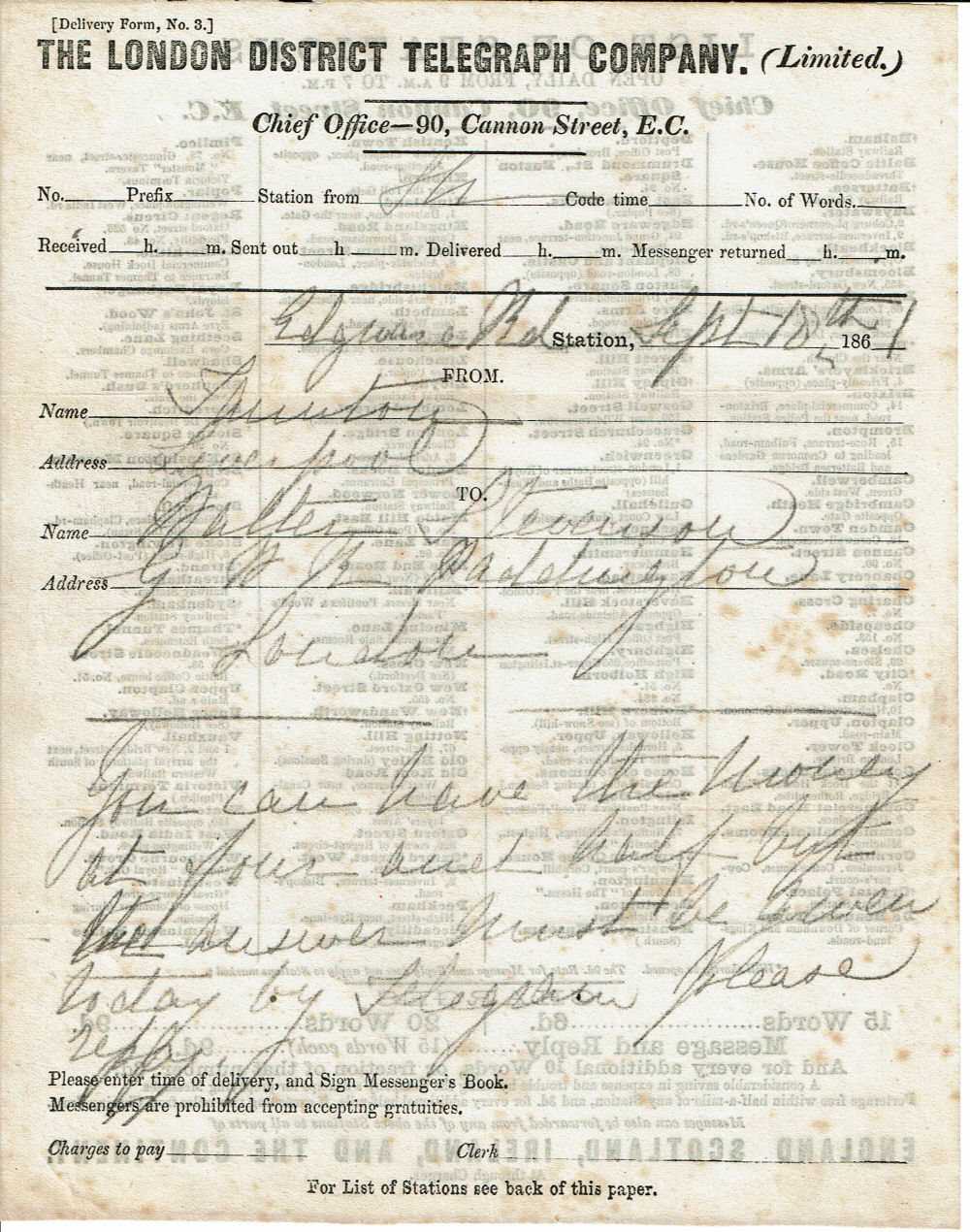
No. 3 1861 Delivery Form - BACK, showing many more stations and the new pricing.
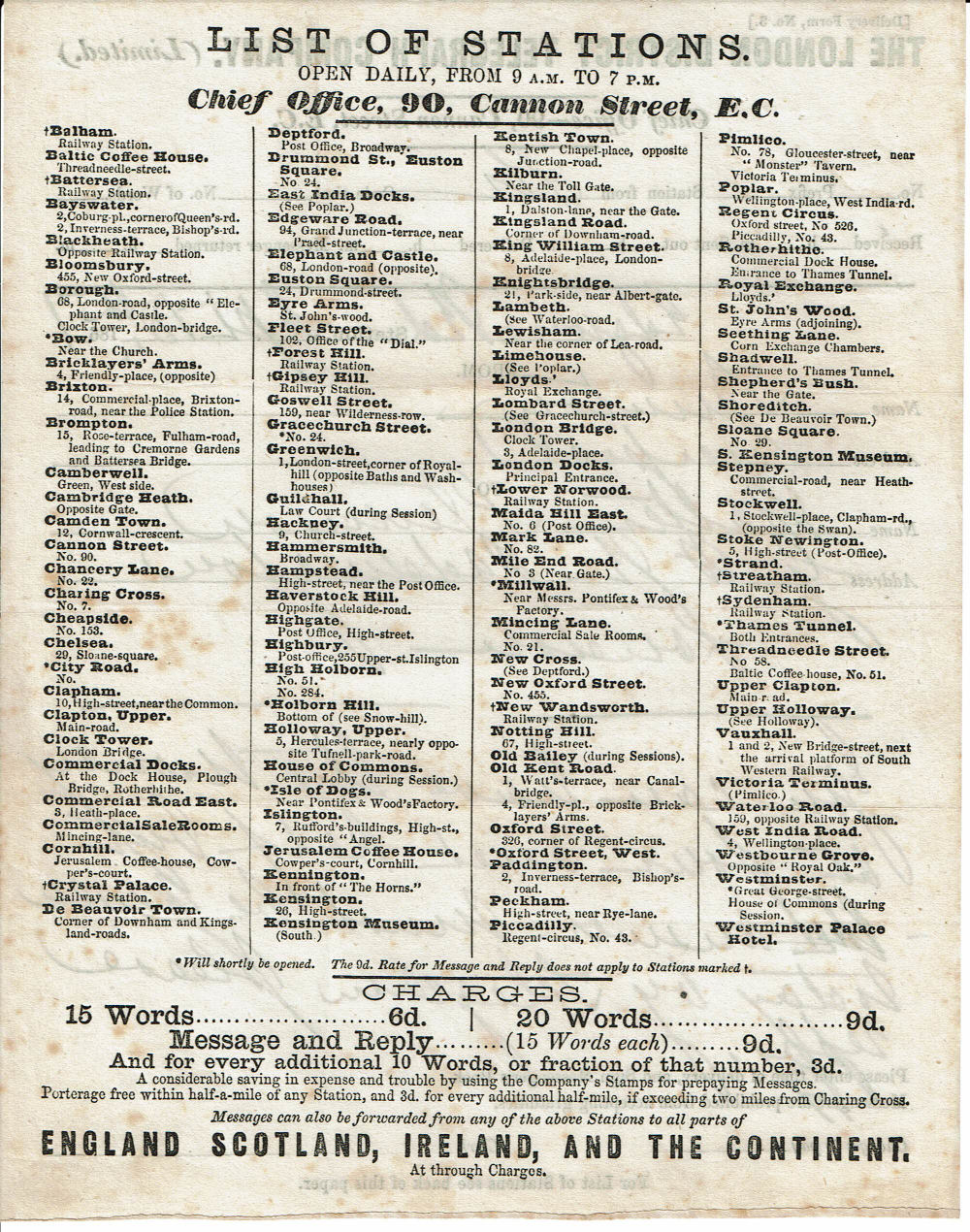
This form used in September 1861 shows a clear purpose for 3d stamps, but has no use for 4d stamps.
Near the bottom it says "A considerable saving in expense and trouble by using the Company's Stamps for prepaying Messages."
It points out that it can forward messages to all parts of "ENGLAND SCOTLAND, IRELAND, AND THE CONTINENT." Though apparently not to Wales !
Again, for purposes of comparison, other than the Central Office, this lists 117 other stations in London.
No. 3 Delivery Form, courtesy of Steve Lawrie. (Printed June 1862, used 21/7/62 - FRONT) - My Reference: LDTC_3-1862-1
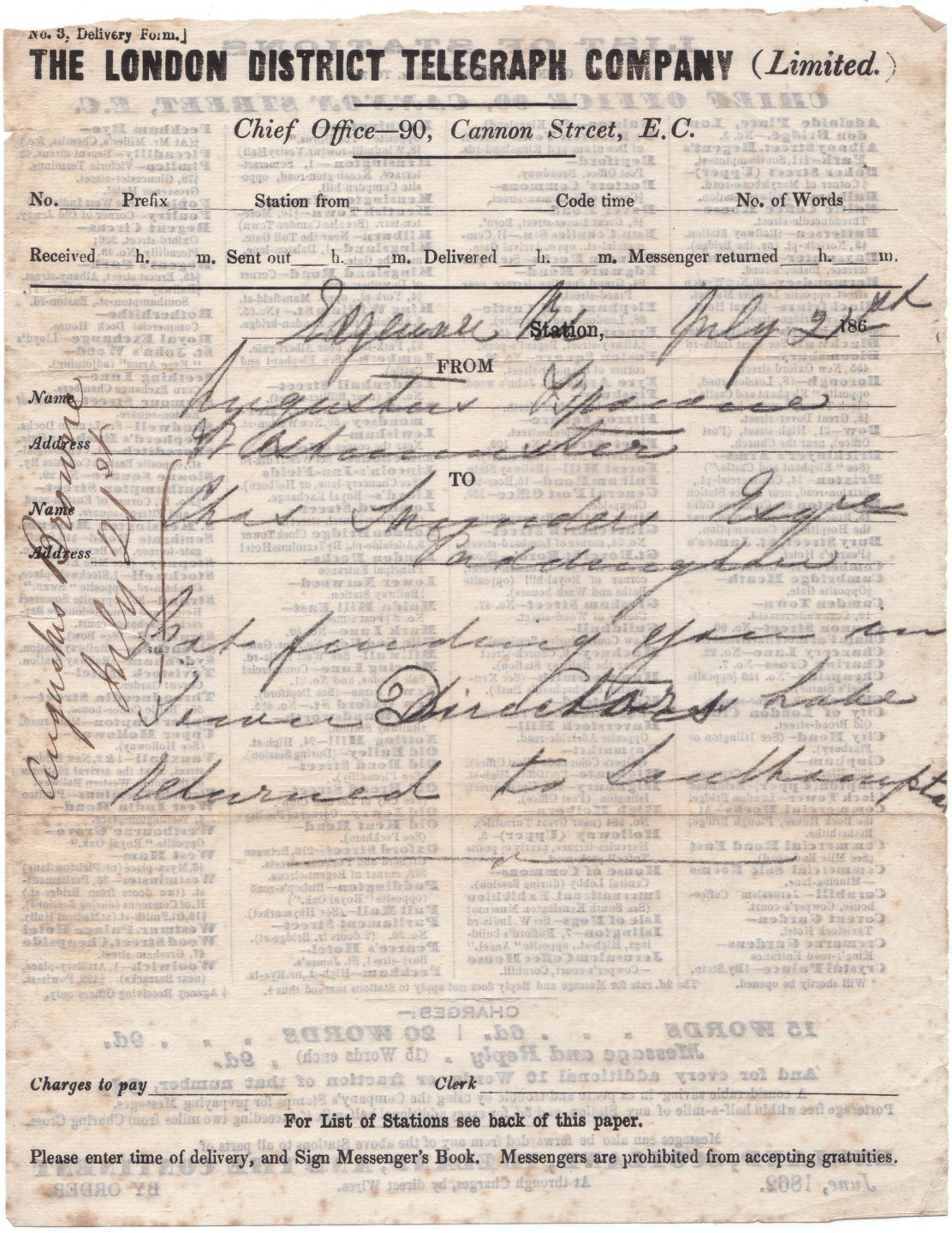
No. 3 1862 Delivery Form - BACK, showing over 100 Stations and the new pricing, together with an Official Order dated June 1862.
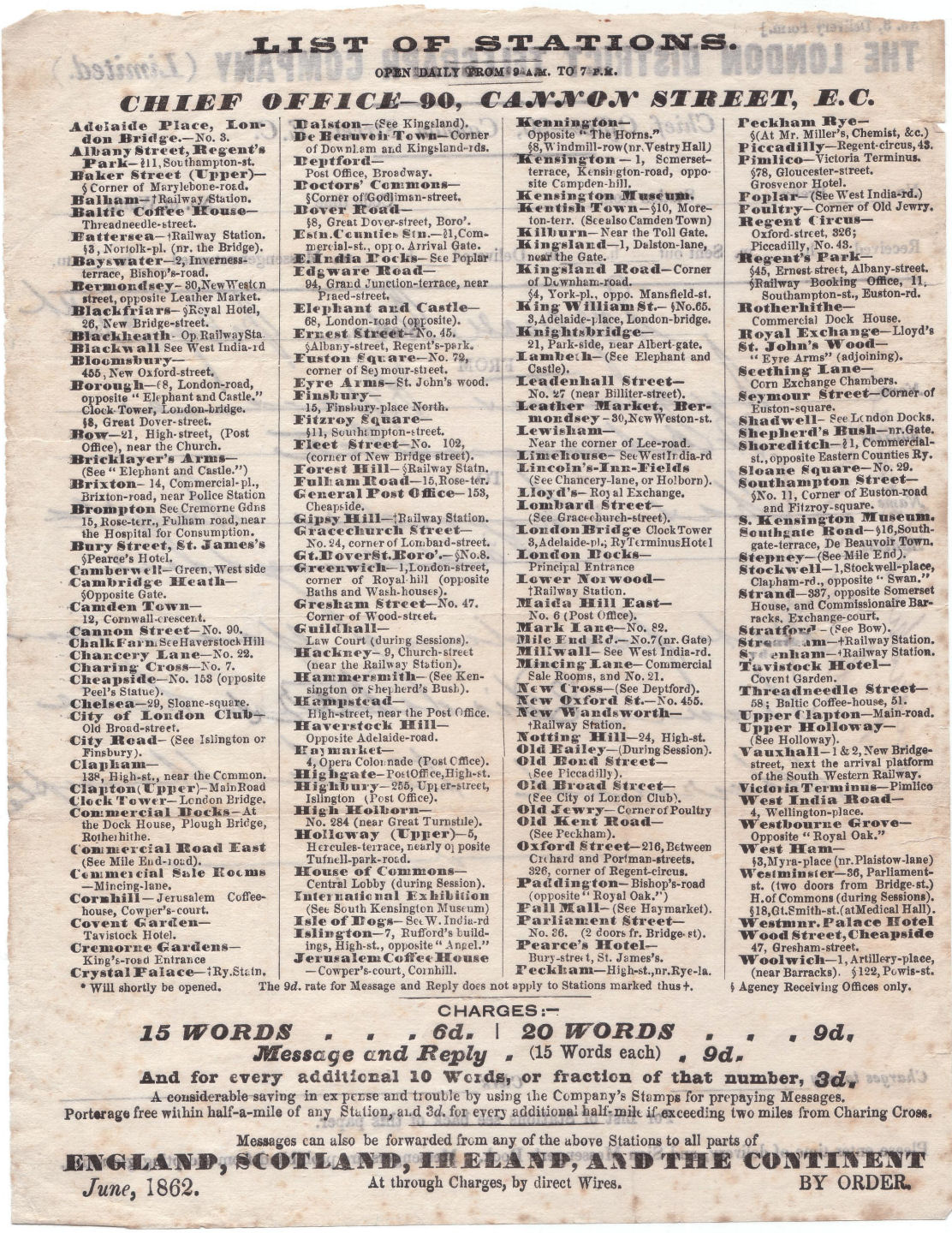
Again, for purposes of comparison, other than the Central Office, this lists 155 other places (in bold type).
No. 3 Delivery Form, courtesy of Steve Lawrie. (Printed October 1862, used 11/2/63 - FRONT) - My Reference: LDTC_3-1862-2
This is L&H #2.
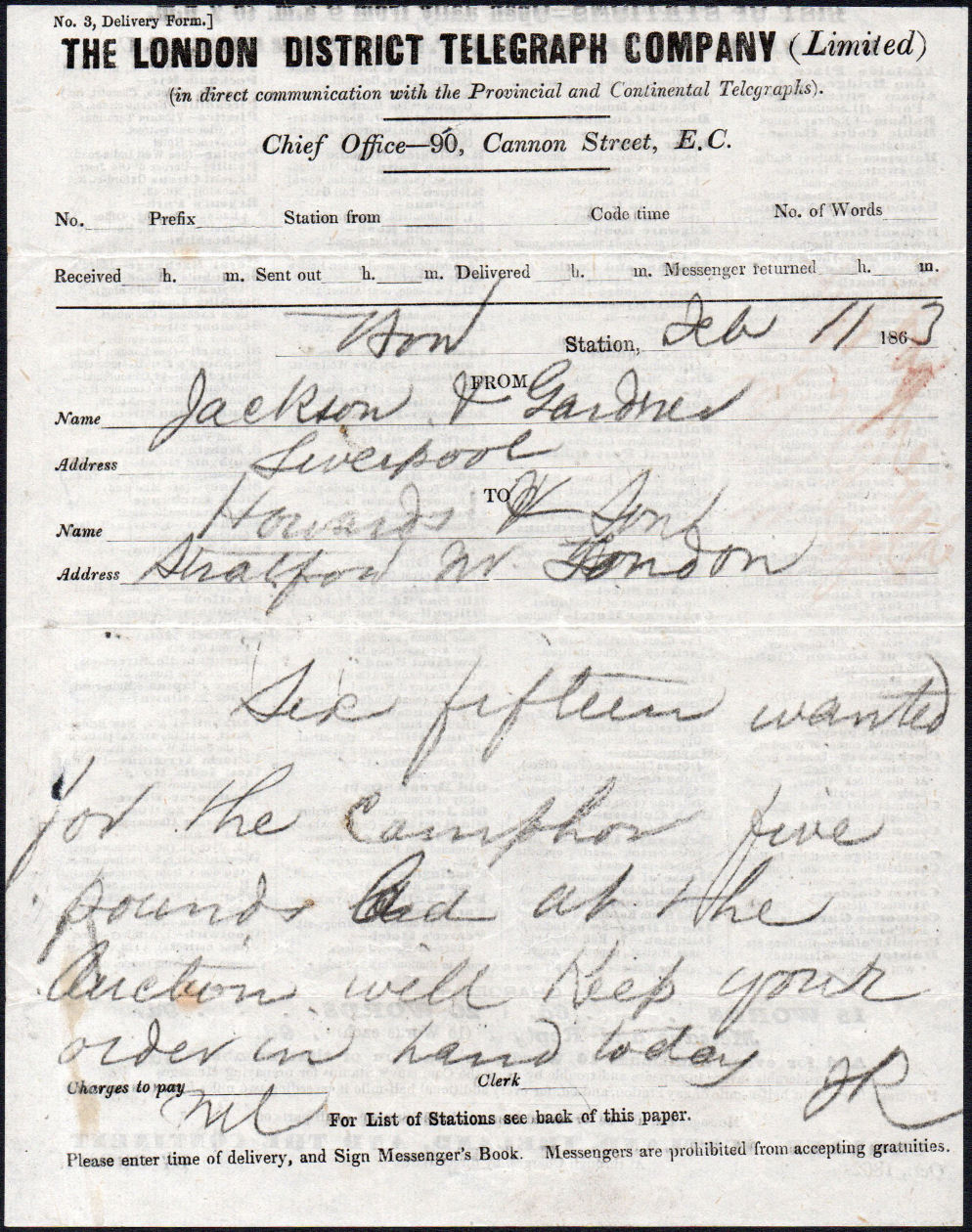
No. 3 1862 Delivery Form - BACK, showing over 100 Stations and the new pricing, together with an Official Order dated October 1862.
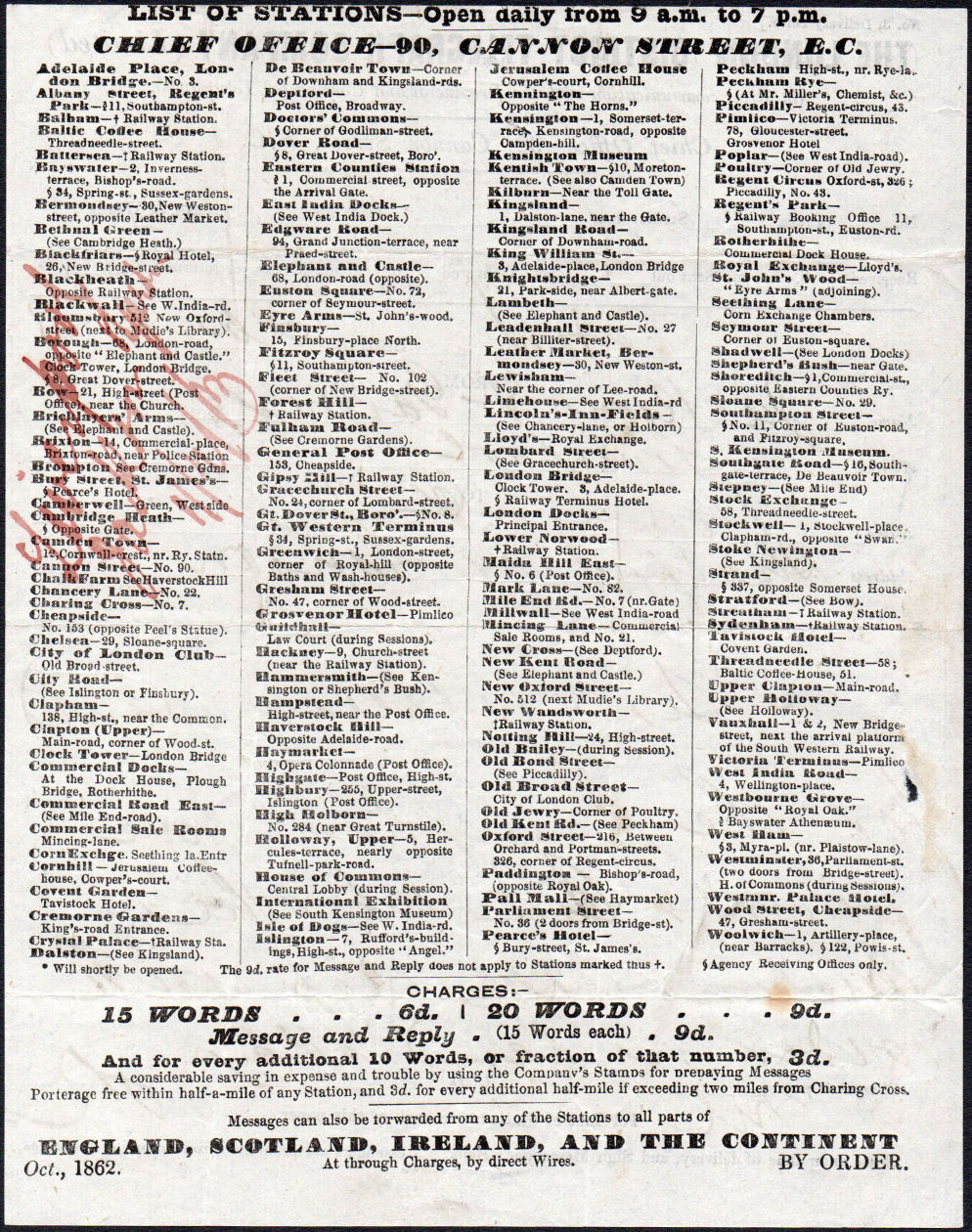
Again, for purposes of comparison, other than the Central Office, this lists 155 other places (in bold type).
No. 3 Delivery Form, courtesy of Edward Coombes. (Printed February 1863 - FRONT) - My Reference: LDTC_3-1863-1
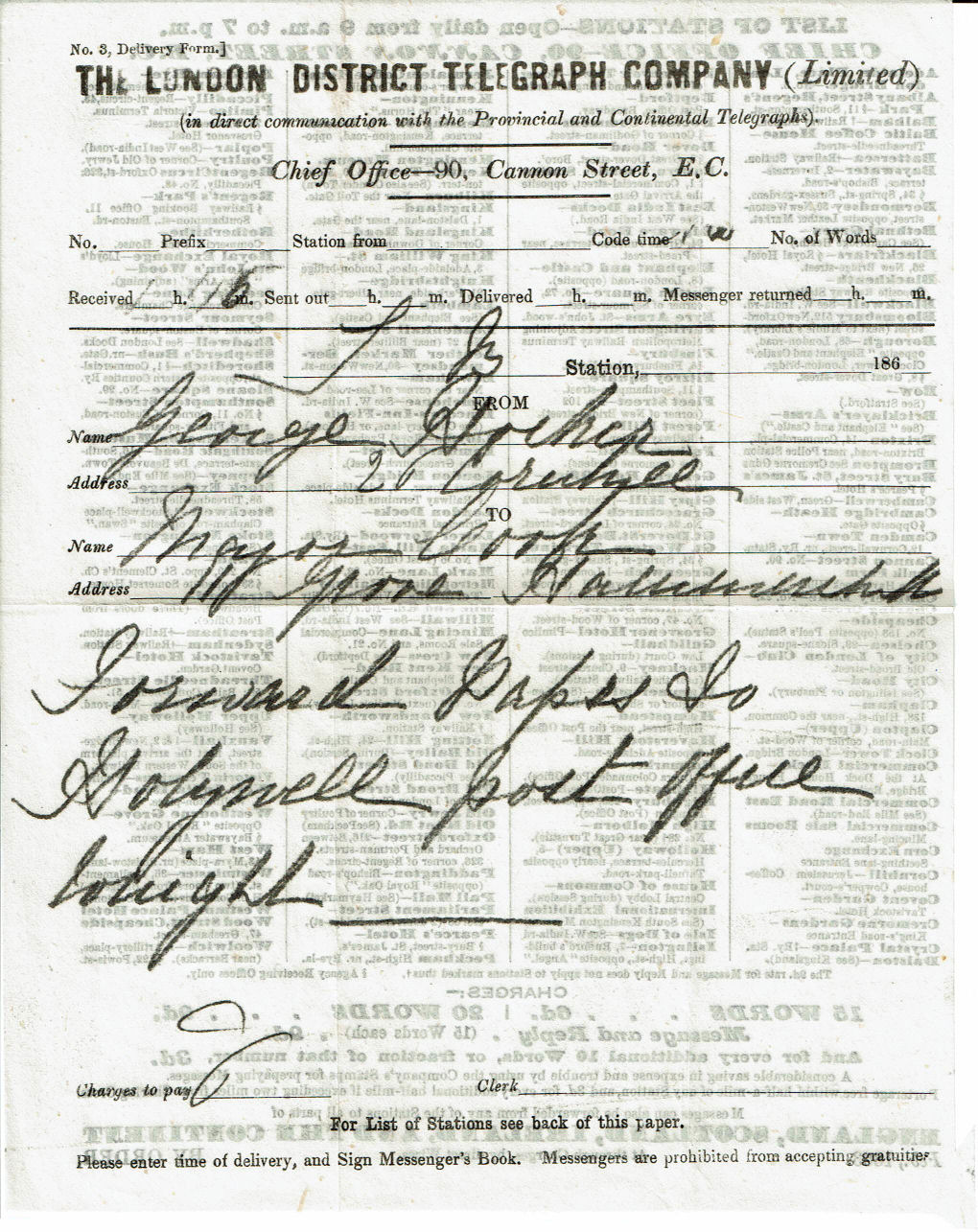
This shows a 6d charge to pay at the bottom.
No. 3 1863 Delivery Form - BACK, showing over 100 Stations and the new pricing, together with an Official Order dated February 1863.
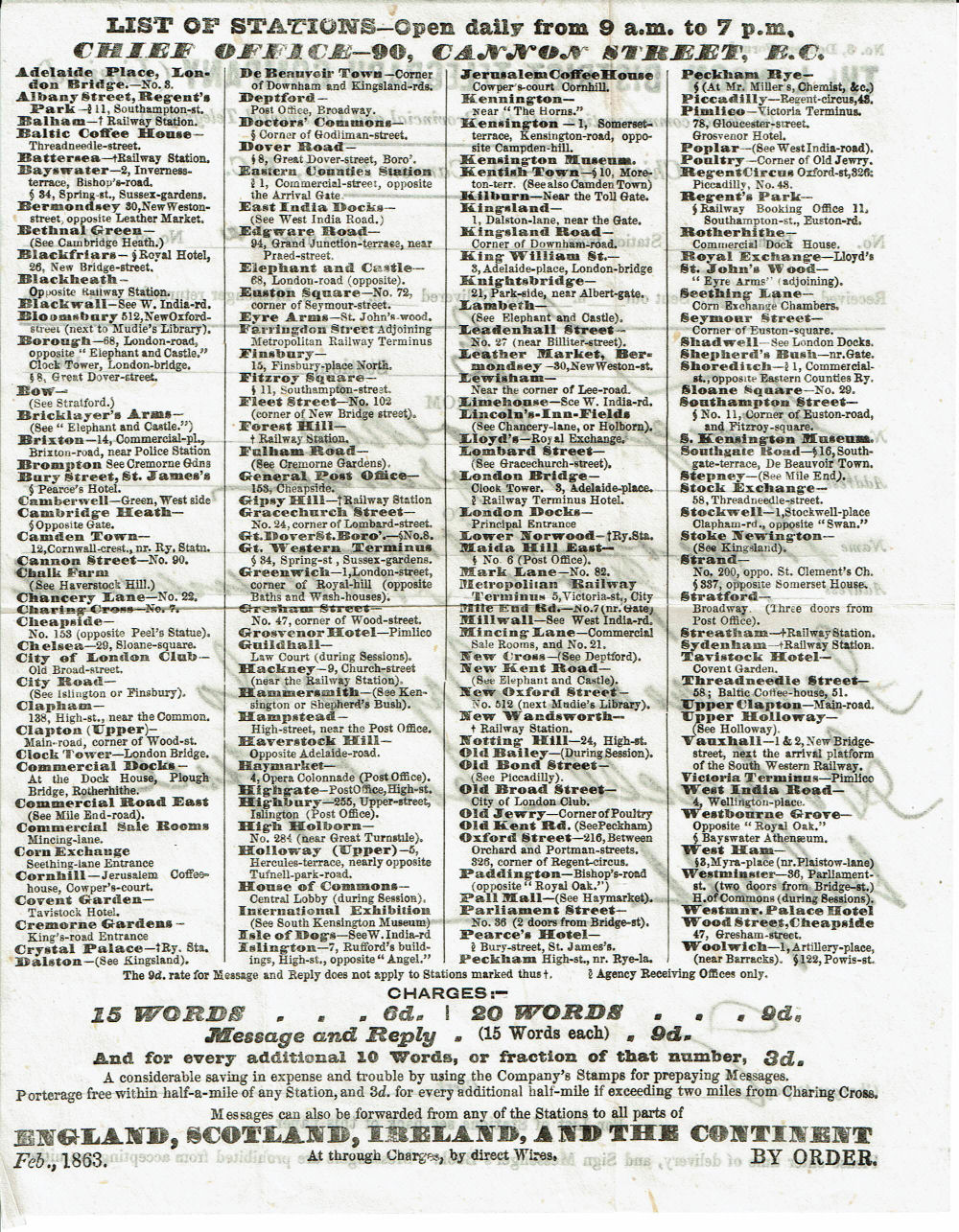
Again, for purposes of comparison, other than the Central Office, this lists 162 other stations.
A later No. 3 Delivery Form (FRONT), courtesy of Dr Mark Gibson. (Printed Jan 1866, used 20/2/66 - FRONT) - My Reference: LDTC_3-1866-1
The wording "(in direct communication with the Provincial and Continental Telegraphs)." has been added.
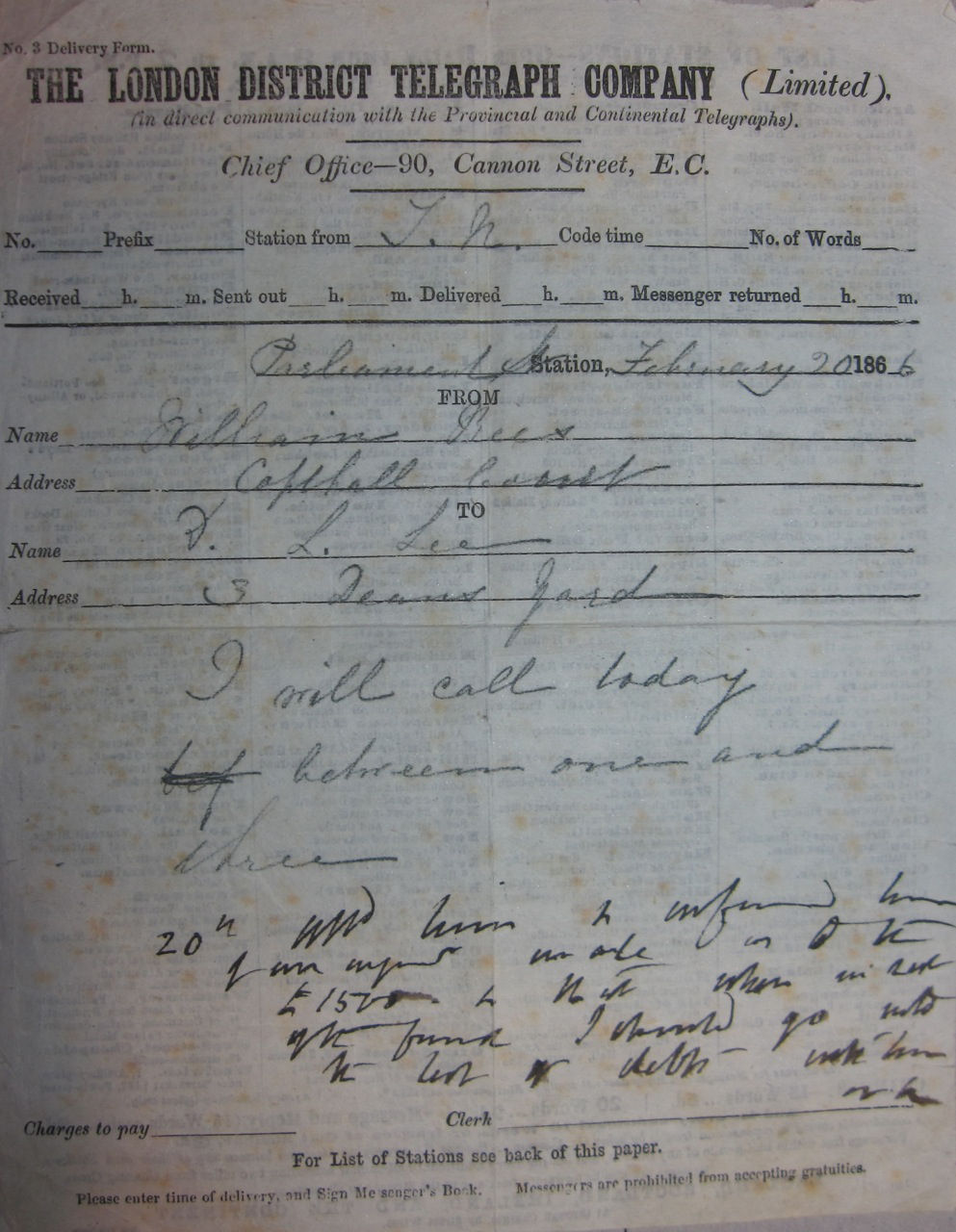
No. 3 Delivery Form (BACK), showing over 100 Stations and the new pricing and a date of January 1866.
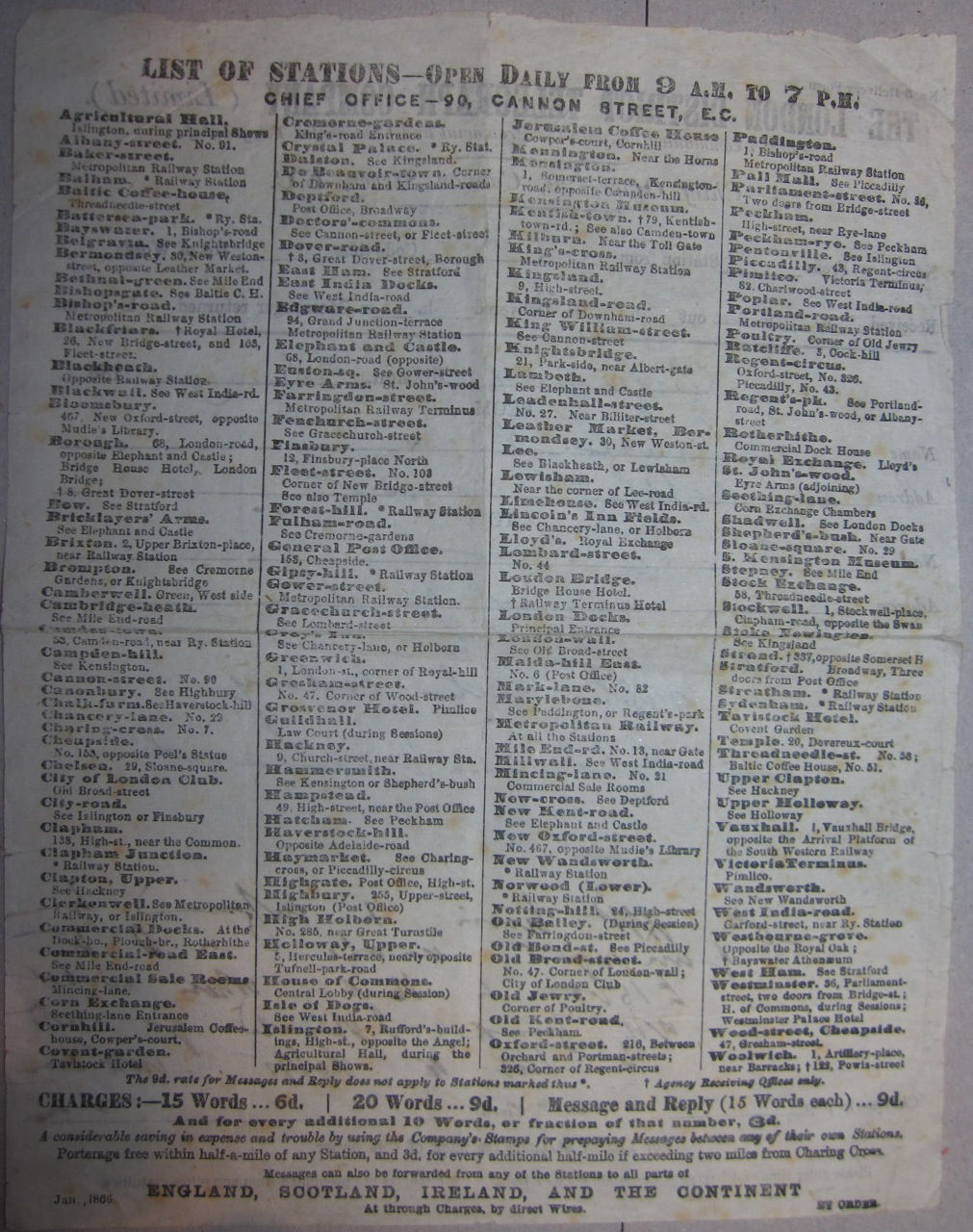
Again, for purposes of comparison, other than the Central Office, this lists 171 other stations.
No. 3 Delivery Form, courtesy of Edward Coombes. used 11/3/1867(?). The Chief Office is now at 101, Cannon Street. Size 211 x 173 mm. - My Reference: LDTC_3-1867-1
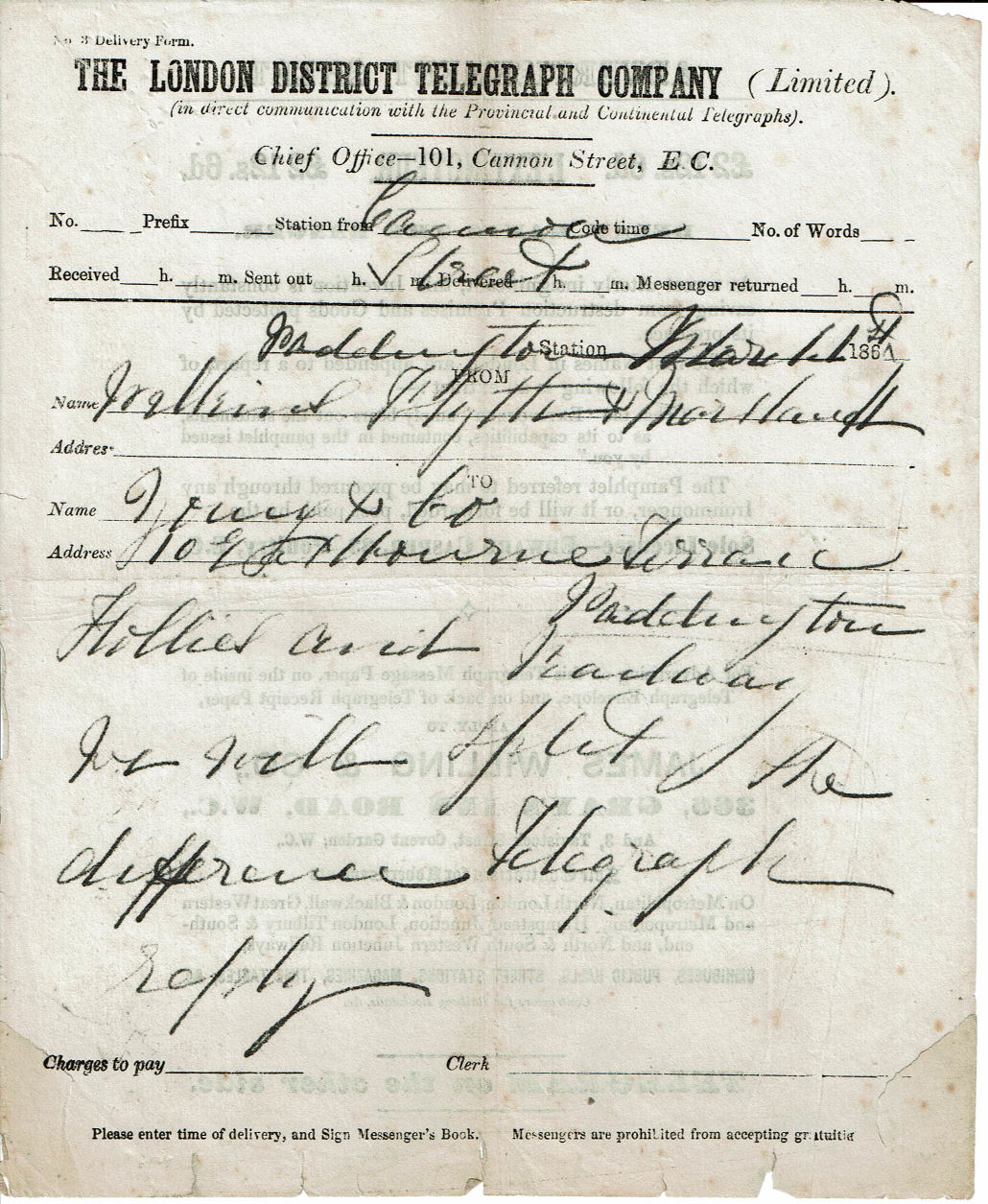
This form used in 1867 has no information about rates on the back, but instead has advertisements.
No. 3 1867 Delivery Form - BACK, showing two advertisements, the second offers to sell advertising space on
the back of the delivery forms, inside the envelopes and on the back of receipts.
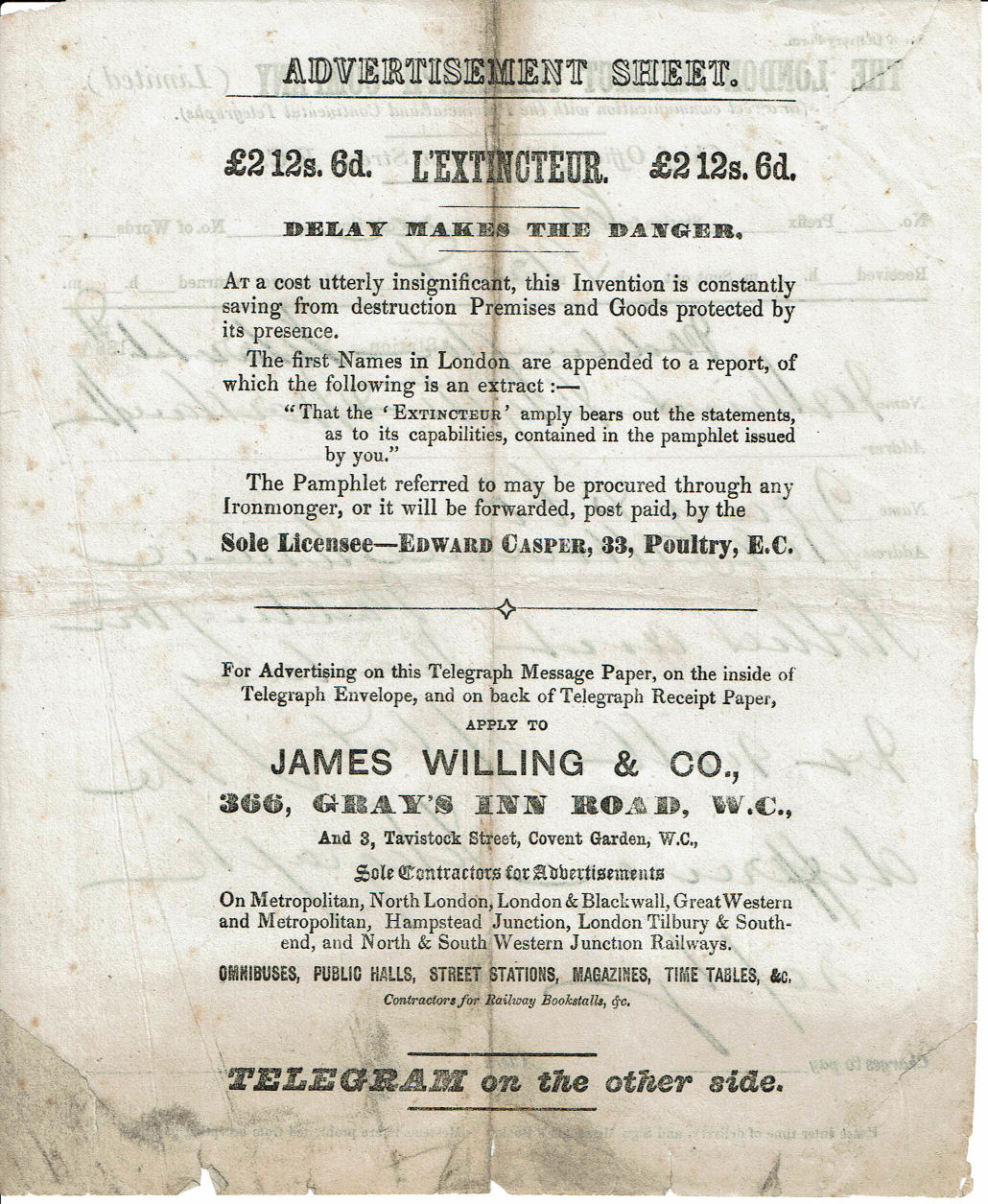
Presumably fire extinguishers sold better in French.
No. 3 Delivery Form from Manchester to London, courtesy of Mark Gibson. (apparently dated 22 June 1868) - FRONT) - My Reference: LDTC_3-1868-1
Now headed "The London & Provincial Telegraph Company (Limited)" at 101 Cannon Street.
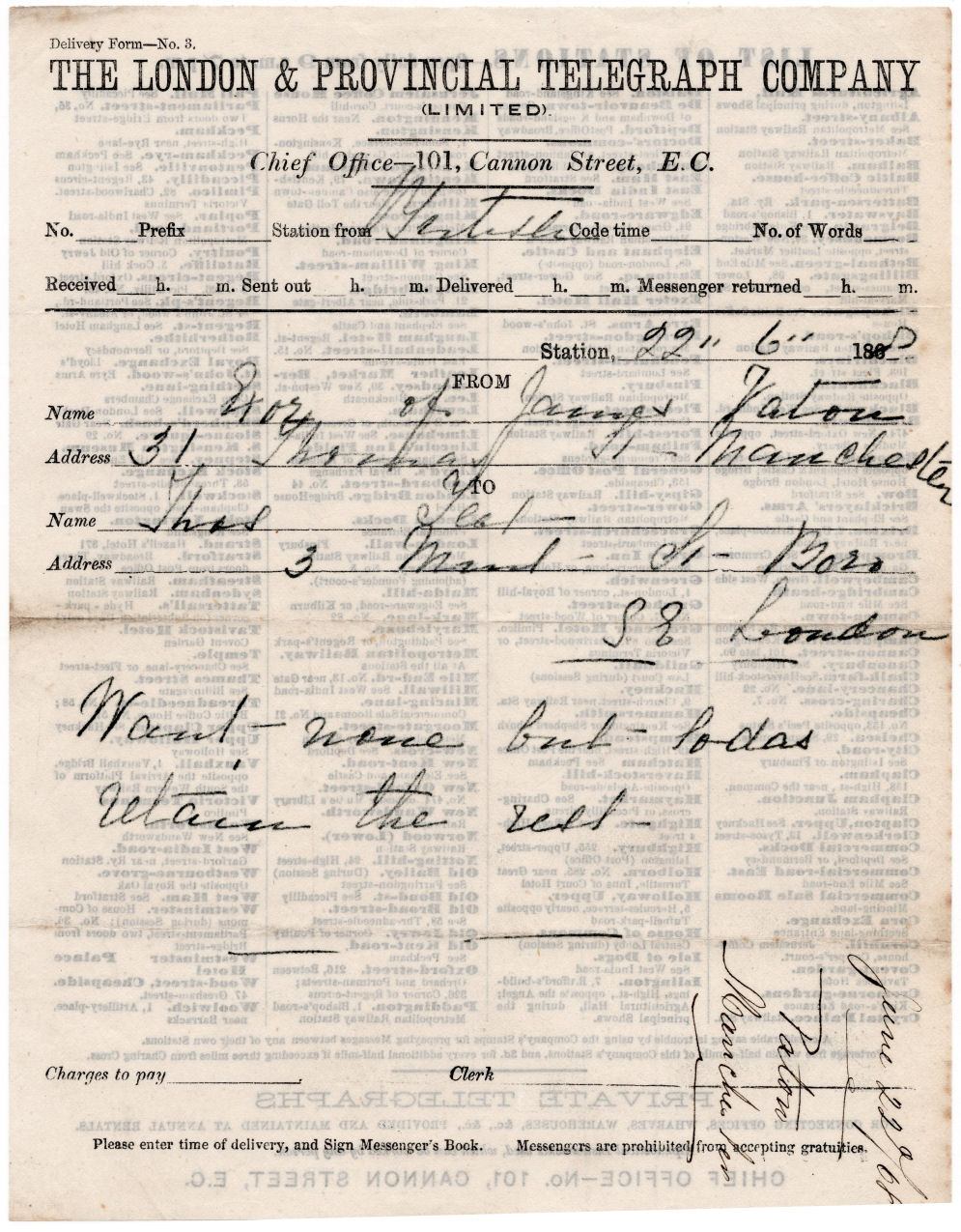
1868 Forwarding Form - BACK, showing a long list of 178 stations in London, open from 9 a.m. until 7 p.m.
The list has duplications though, like "Dalston. See Kingsland-road"
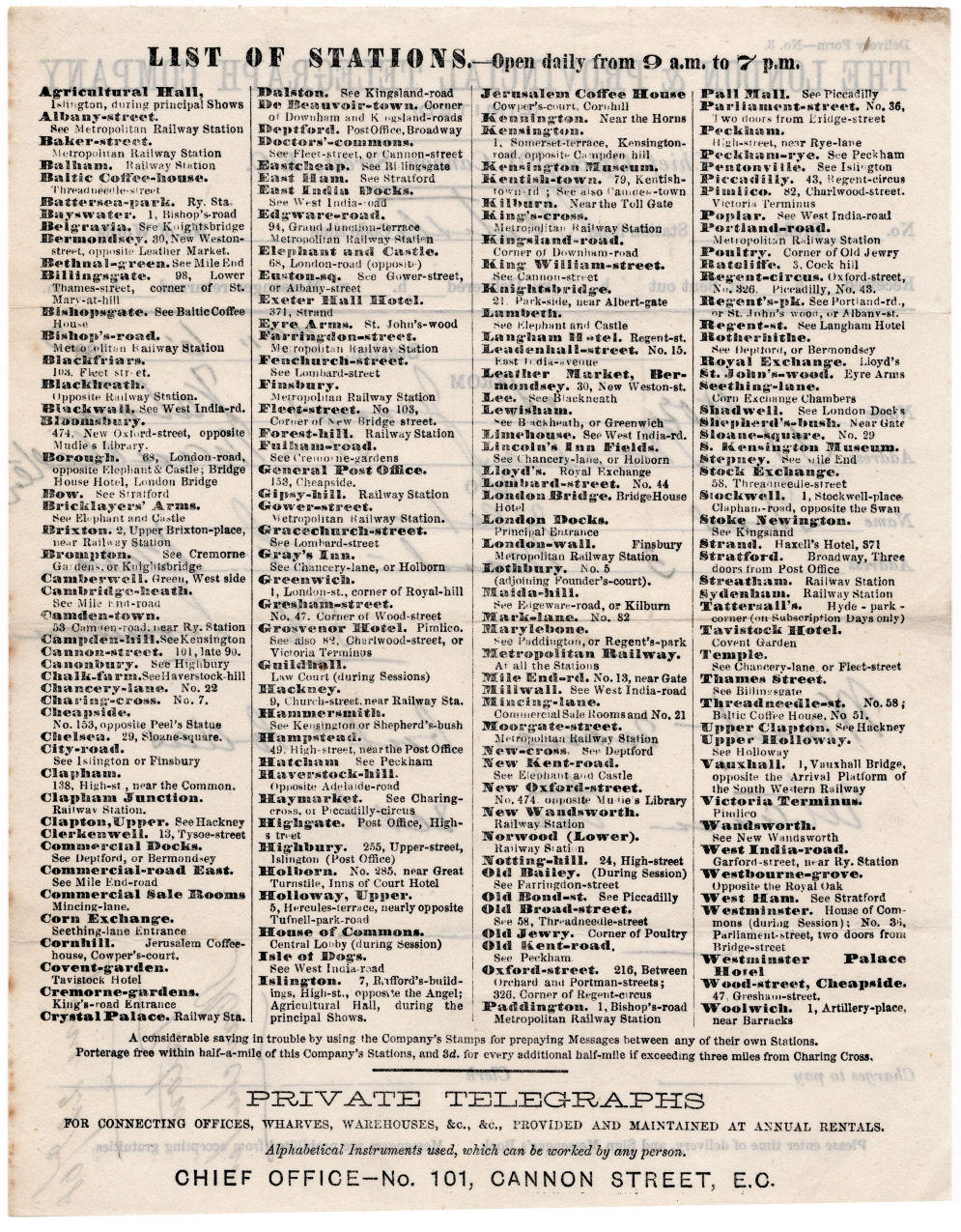
It states "A considerable saving in trouble in trouble by using the Company's Stamps for prepaying Messages between any of their own Stations.
Porterage free within half-a-mile of this Company's Stations, and 3d. for every additional half-mile if exceeding three miles from Charing Cross."
Below that it offers "Private Telegraphs" for business use at annual rentals.
No. 3 Delivery Form, courtesy of Edward Coombes. used 30 December 1869. Size 220 x 170 mm. - My Reference: LDTC_3-1869-1
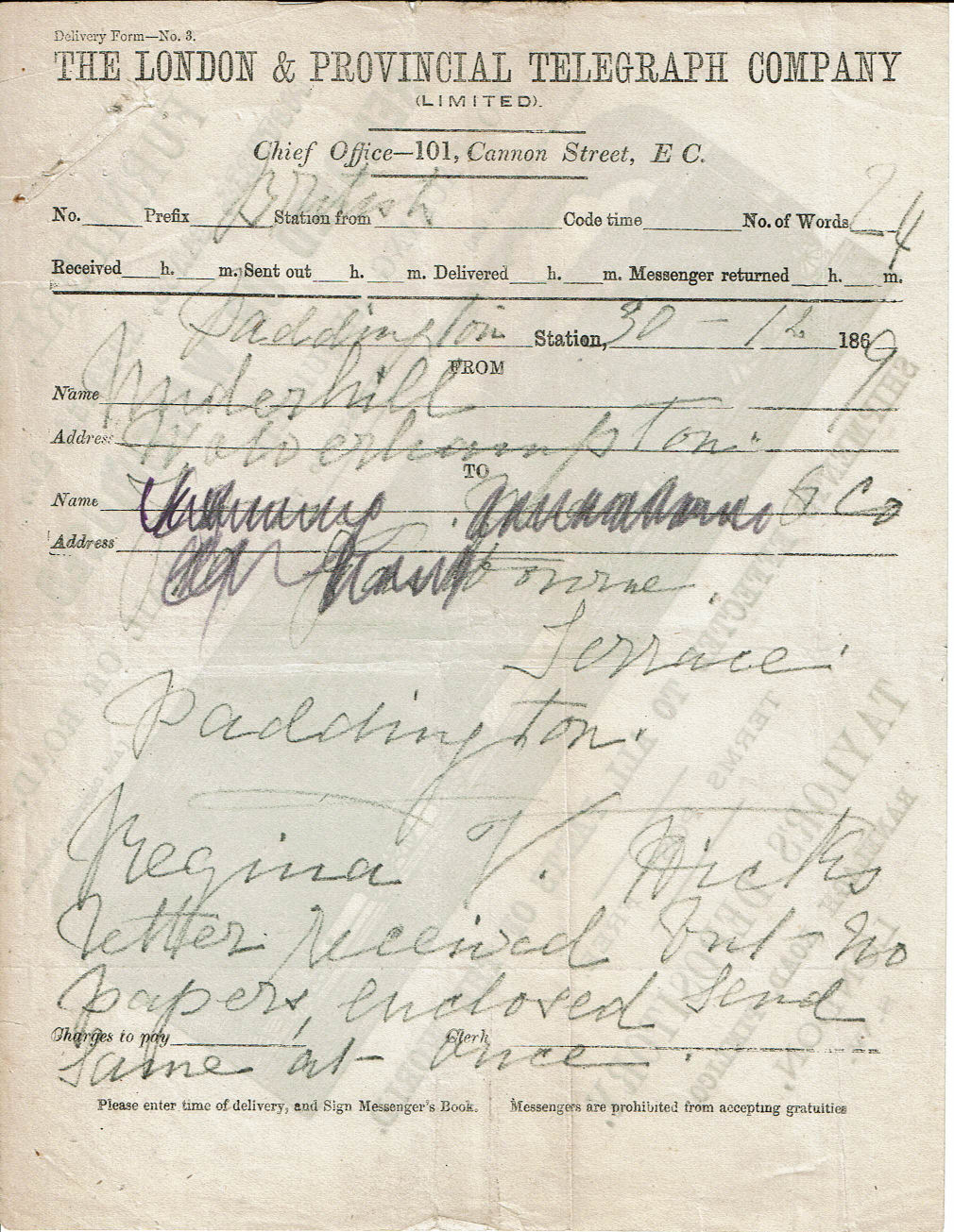
This form used in 1869 has no information about rates on the back, but instead has an advertisement for Taylor's Depository.
No. 3 30 December 1869 Delivery Form - Back, This corresponds to L & H third form.
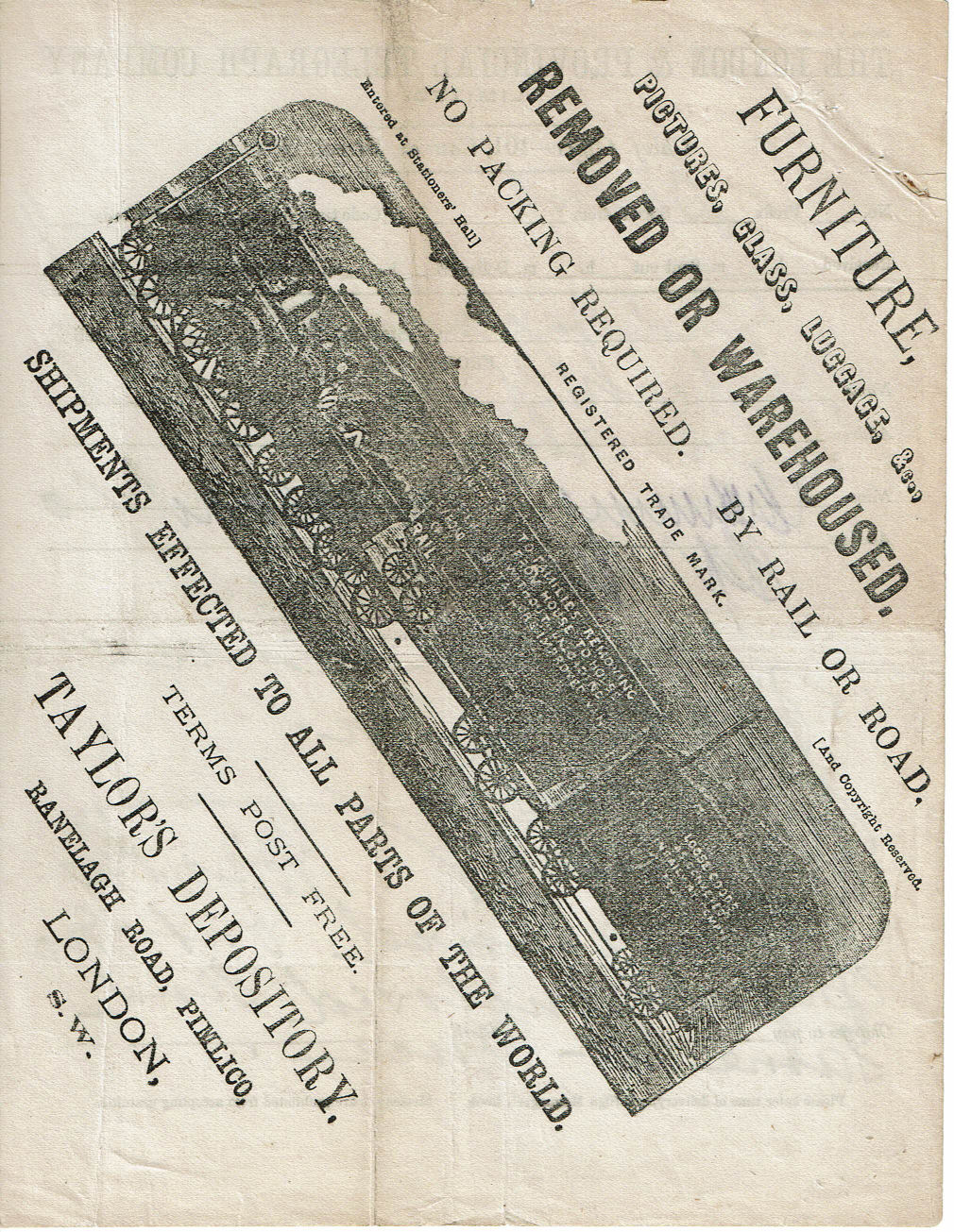
Advertisement for Taylor's Depository, Ranelagh road, Pimlico, London S.W.
Delivery Form 3 :
| Provisional Reference | L & H number | Date on form | Date used | Tariff | Number of Branches | Chief Office | Advertisements |
|---|---|---|---|---|---|---|---|
| LDTC_1860-1 | 1 | 9/1/60 | 2/2/1860 | 4d/6d/2d | 24 | 58 Threadneedle Street. | - |
| LDTC_3-1861-1 | - | 186_ | 18/9/1861 | 6d/9d/3d | 117 | 90 Cannon Street | - |
| LDTC_3-1862-1 | - | June 1862 | 21/7/1862 | 6d/9d/3d | 155 | '' '' '' '' '' | - |
| LDTC_3-1862-2 | 2 | October 1862 | 11/2/63 | 6d/9d/3d | 155 | '' '' '' '' '' | - |
| LDTC_3-1863-1 | - | February 1863 | ? | 6d/9d/3d | 162 | '' '' '' '' '' | - |
| LDTC_3-1866-1 | - | January 1866 | 20/2/1866 | 6d/9d/3d | 171 | '' '' '' '' '' | - |
| LDTC_3-1867-1 | - | 186_ | 11/3/1867 | - | No list provided | 101 Cannon Street | L' Extincteur + James Willing |
| LDTC_3-1868-1 | - | 186_ | 22/6/1868 | Porterage | 178 | '' '' '' '' '' | - |
| LDTC_3-1869-1 | 3 (used 28/7/1869) | - | 30/12/1869 | - | No list provided | '' '' '' '' '' | Taylor's Depository |
Note: Between the first two of these, about 90 branches were added at the rate of about 5 per month.
I think it likely that one or two new forms were printed between these two. There may well be other forms before the first.
According to Raymond Lister (1961), the Tariff was increased in 1866 to 1/- for 15 words, porterage extra.
It is certain that many other types of form exist and I would welcome scans of additional ones to extend this listing.
The move to Cannon Street took place in early August 1860 according to Steven Roberts of Distant Writing.
The change of address in 1867 was not a re-location, but the result of renumbering.
An envelope (size 137 x 74 mm, plain on reverse) for a No. 3 Delivery Form printed in February 1863, - My Ref. LDTC-Env-1863-1
shown above, listed as 1863-1, courtesy of Edward Coombes.
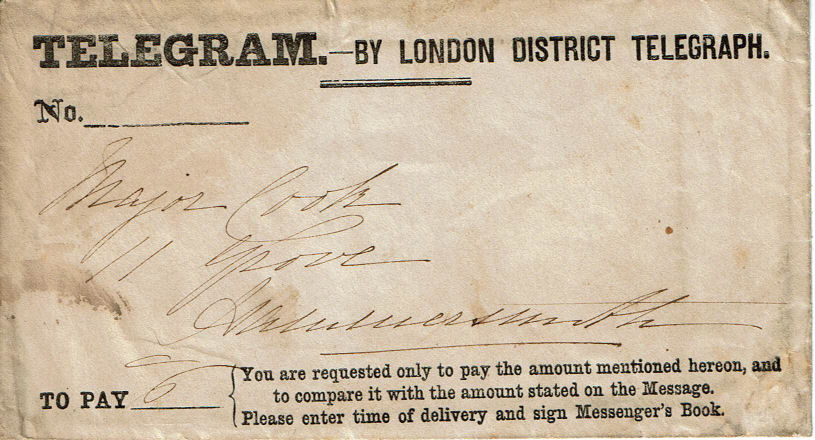
This was sent to Major Cook of 11 Hammersmith Grove.
There was 6d to pay, so presumably the address was over 1½ miles from the Hammersmith Office.
Advertising has been important for a long time - My Ref. LDTC-Env-1863-2
Here is a similar envelope, courtesy of Steve Lawrie.
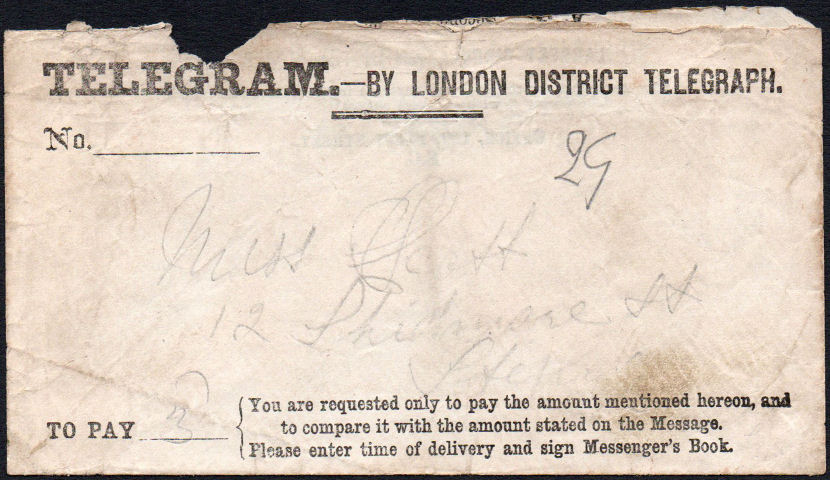
Inside is an advertisement for the Evening Standard Newspaper. The flap has a generic embossed seal
The envelopes were probably supplied by the printer, providing a discount to LDTC paid for by the Evening Standard.
Here is the other side of the coin :
An envelope used in London on 27 November 1863 advertising the LDTC, courtesy of Steve Lawrie.
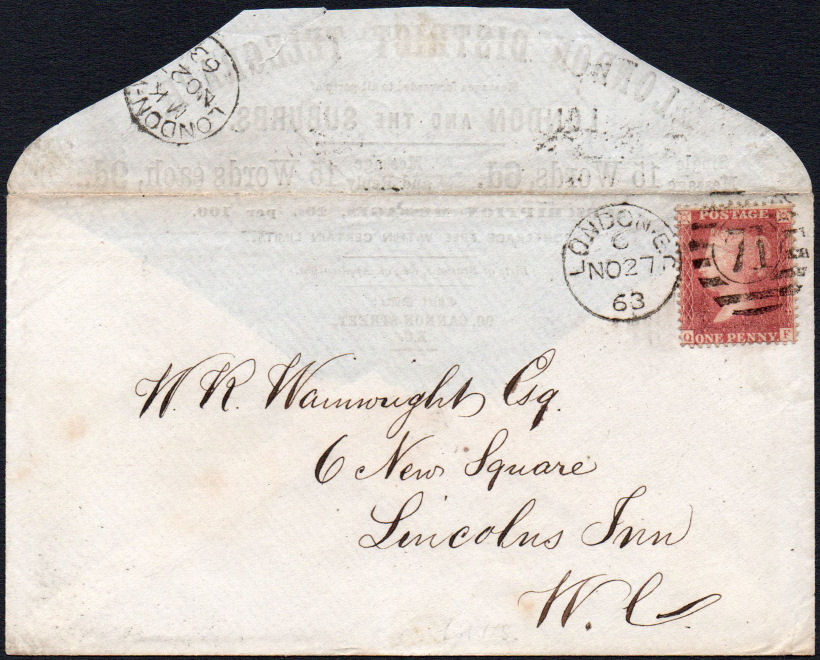
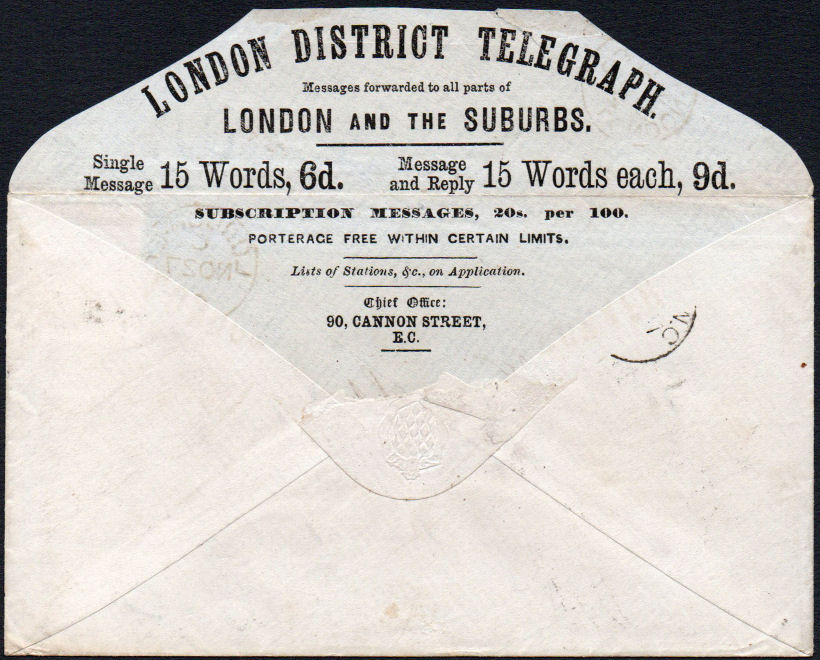
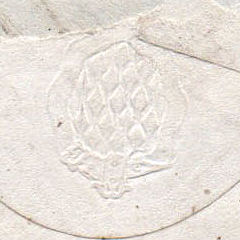
The embossed seal again generic, a simple device advertising their own wares.
Back to LDTC, here is a later one of 13 April 1866, again courtesy of Steve Lawrie. - My Ref. LDTC-Env-1866-1
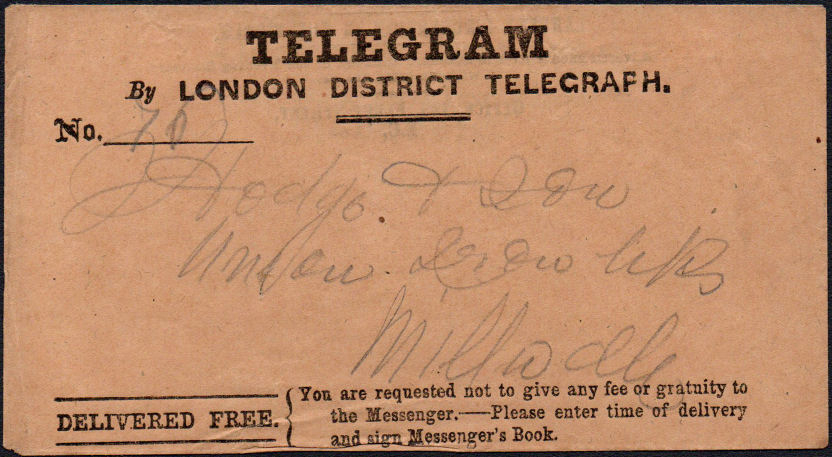
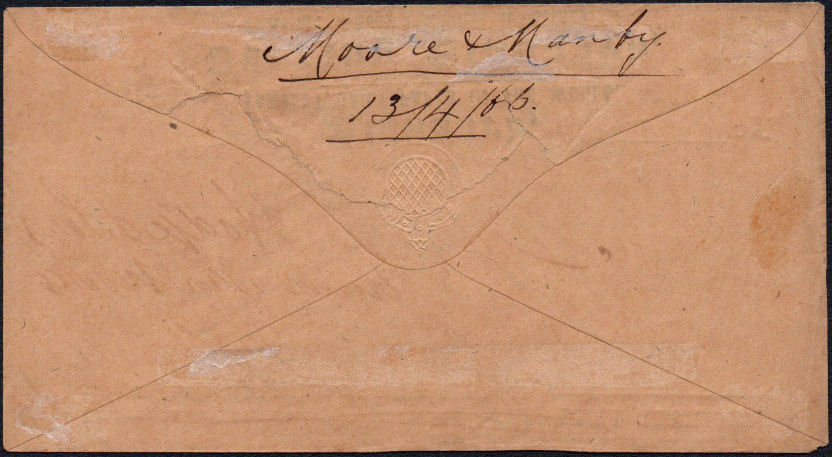
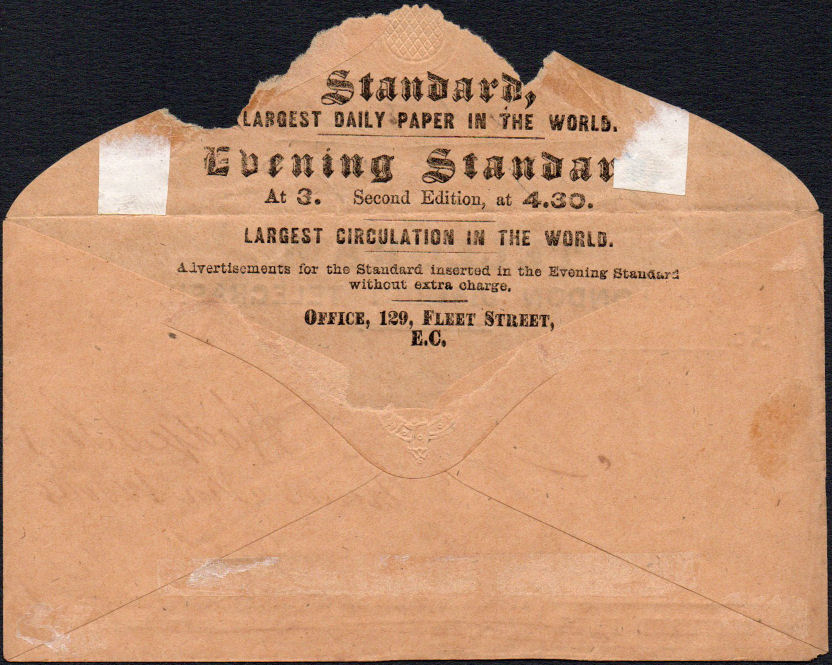
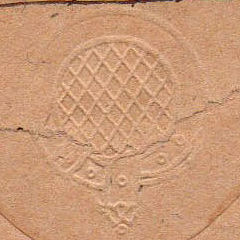
Does this embossed seal look familiar? As well as the one above, a British & Irish envelope of 1860 has one very similar. Presumably generic.
| Provisional Reference | Date on form | Date used | size mm. | front print colour | Logo on flap ? | Comments |
|---|---|---|---|---|---|---|
| LDTC-Env-1863-1 | - | 1863 | 137 x 74 | black on white | ? | |
| LDTC-Env-1863-2 | - | ? | ???? | black on white | generic | Advert for Evening Standard inside |
| LDTC-Env-1866-1 | - | 13/4/1866 | ???? | black on orange-brown | generic | Advert for Evening Standard inside |
A Receipt for 1/9d (size 92 x 58mm) dated 23/5/62, courtesy of Edward Coombes. - My Ref. LDTC-Rec-1862-1
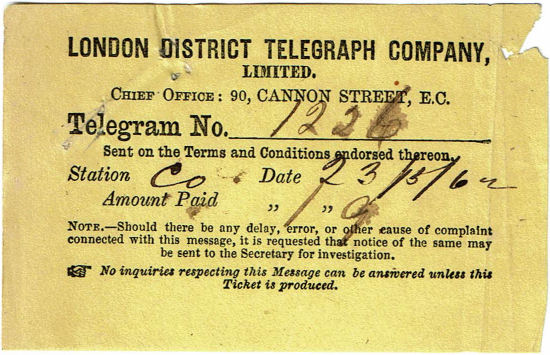
The Station looks like it was 'COM', presumably the Commercial Sale Rooms, Mincing Lane.
An advertising leaflet of January 1864 (both sides, 150dpi), size 214 x 100mm.
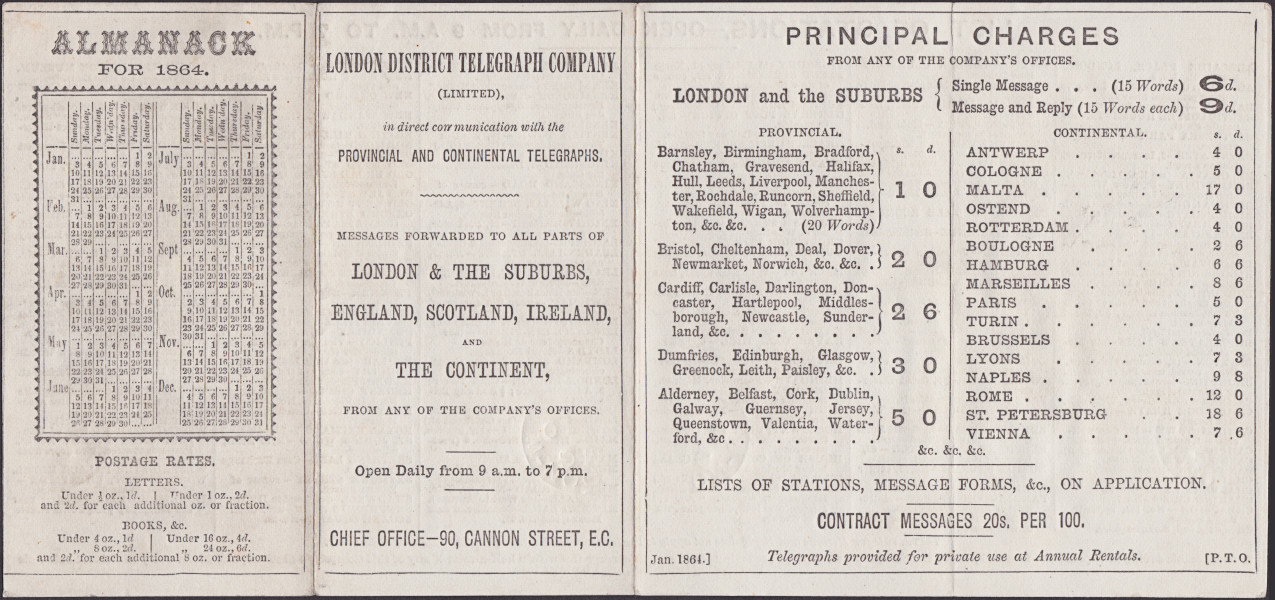
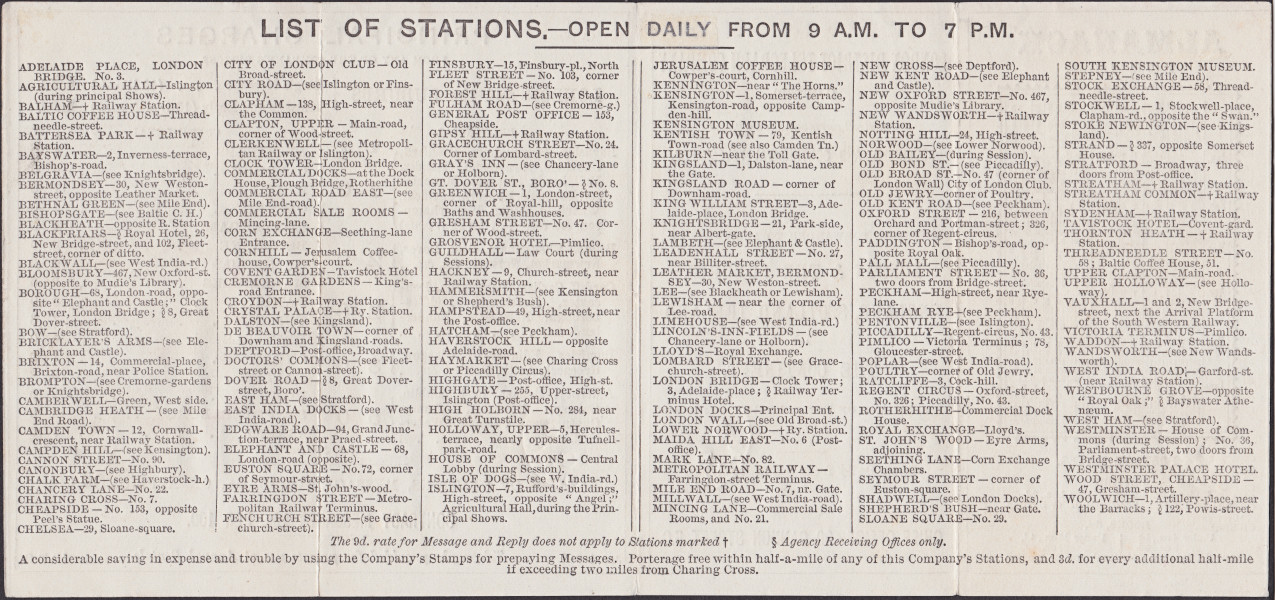
This lists 171 offices including the main office, however it has a lot of duplications like 'BOW - (see Stratford).',
though some locations list two offices; Blackfriars, Borough, Mincing Lane and Oxford Street. It works out at 132 unique offices.
An interesting feature of this is the reference to 'Contract Messages' at 20s per 100. This corresponds to the 100 pre-paid messages for
twenty shillings mentioned by Steven Roberts as being offered from October 18, 1861 until 1866.
Last updated 14th. February 2023
©Copyright Steve Panting 2012/13/14/15/16/17/18/19/20/21/22/23 except where stated.
Permission is hereby granted to copy material for which the copyright is owned by myself, on condition that any data is not altered and this website is given credit.